U NI N THE

Admin cancels CreatorScape, cites potential safety concerns
By Akshaj Kashyap
CreatorScape, an arts and literature fair originally planned for April 26, 2024, hosted jointly by One Long Story (OLS) and Youth Arts Movement (YAM), was canceled a day prior by MHS administration for “security reasons,” OLS president Kate Chua said. A few of CreatorScape’s vendors planned to donate proceeds to the nonprofit charity Care For Gaza, which school administration cited as a potential security threat, Chua said.
OLS and YAM were forced to cancel the event at the last minute after preparing for the event for months, YAM secretary Lantern Nguyen said. Ultimately, OLS and YAM decided to modify CreatorScape so that vendor proceeds were no longer donated to charity and scheduled the new version of the event to May 17, Nguyen said.
In the original CreatorScape, the charity supporting Gaza was a minor part of the event, with the main focus being on art, literature, and the vendors, Chua said. Even in the event’s marketing, the Care For Gaza charity was briefly mentioned at the bottom of the advertisement, she said.
“I want to stress (that) five vendors were planning to donate to Care For Gaza, which is specifically humanitarian aid and is not a commentary on the political situation between Gaza and Israel,” Chua said. “The fact is people are dying in Gaza right now—it’s a huge crisis (...) and for (CreatorScape) to be shut down brings into question what other fundraisers are going to be shut down and is sending a statement about what issues are allowed to be talked about and fundraised for on campus.”
Principal and Chief Innovator of Milpitas High School and New

Innovation Campus to enroll only underclassmen in upcoming school year; logistics being finalized
By Kevin Ting
The Innovation Campus will only be enrolling freshman and sophomore for the 2024-2025 school year due to low enrollment numbers from upperclassmen, Principal and Chief Innovator of Milpitas High School and New Campus Programs Greg Wohlman said. This will result in 83 students enrolled for the extension campus next year, he added.
“We had a very low number of seniors and juniors that enrolled, so we focused on just ninth and 10th graders, which was a very, very hard decision to make,” Wohlman said. “But when you only have three students from one class and 15 or less from another, it makes it very difficult to schedule and to staff.”
Among the students at the Innovation Campus will be about 20 current freshmen who will be joining the Engineering and Technology Academy (E-tech), which will be fully migrating to the extension, said counselor Val-
erie Lamb, who works with academy students.
“I did see a lot of discussion, especially the incoming 12th graders for next school year, not wanting to go to the new campus because they have already been in the main campus,” Lamb said. “I know they established a lot of friends here. They did not want to get pulled for that.”
E-tech Academy Lead Mimi Nguyen, engineering teacher Paul Okoye, and Lamb will all be moving to the Innovation Campus, along with 11 other staff members, Wohlman said.
Although the E-tech Academy will move to the Innovation Campus, classes will still be taught at MHS for the upperclassmen who are not moving to the new extension, Lamb said.
“The next school year, we will have Mr. Okoye teach period one and two for the incoming 11th and the incoming 12th graders, then he will drive over to the Innovation Campus to teach those students,” Lamb said.
School to offer new ethnic studies, film history classes, garners student interest
By Paarth Gupta
MHS will offer three new classes for the 2024-25 school year, Assistant Principal Jonathan Mach said. The new classes offered will include Ethnic Studies: LGBTQ+, Ethnic Studies: History of Hip-Hop, and Film History, Mach added.
Vietnamese was also originally planned to be added; however, due to a lack of interest from students, Vietnamese will not be taught next year, Mach said.
At the time of publication, Ethnic Studies: Hip-Hop has 63 course requests, Ethnic Studies: LGBTQ+ has 29 course requests, and Film History has 28 course requests, according to counselor Julie Cler.
Due to a complaint of too few classes for students, school leadership hoped to start new classes for the next year, Mach said.
“There was an effort to figure out if we can run the semester-long classes so that, if kids did these classes, they wouldn’t just take TA classes,” Mach said. “They could have another academic course to put in their schedule to boost up their GPA.”
California will require a semester of ethnic studies to graduate high school starting with the graduating class of 2030, according to Assembly Bill 101. High schools will also be required to begin offering ethnic studies by the 2025-26 school year, according to the same bill.
Although MHS has always of-
fered Ethnic Studies 1 and Ethnic Studies: Literature, more options for students to choose from seemed valuable because of the new graduation requirement, Mach said.
Teachers decide which classes they want to teach next year and, in that process, proposals for two ethnic studies classes emerged organically, Mach added.
“There was no administrative push for these classes because it had to be a passion,” Mach said.
“As an administration, our goal was to have something somebody’s passionate about that they could teach.”
Wrencher has always wanted to teach subjects he is interested in,
 By Tiffany Ng
By Tiffany Ng
At the May 14, 2024 board meeting, MUSD board members collectively approved measures to explore the possibility of adding a new parcel tax measure to the November 2024 election ballot, according to the MUSD website. They will work with two firms, Props & Measures and EMC Research, to evaluate the feasibility of the parcel tax and potentially get it on the ballot, the website said.
Under the current parcel tax, homeowners are required to pay $84 per year, Superintendent Cheryl Jordan said. If the majority of voters approve the additional parcel tax, it will allow more funding for district-wide programs such as computer science and athletics, she added.
The counselor that is moving over to the Innovation Campus will also help with other schools in the district, and MHS will get a new counselor, Wohlman said.
“Most of our movement of teachers will not be filled, and we’re going to do what we can to schedule classes to balance our classes here without overloading classes,” Wohlman said.
Aside from counseling services, MUSD is also looking to integrate special education into the Innovation Campus in the near future, Wohlman said.
“We have to make sure that we can serve all the needs of all of our students, so that’s something that’s being analyzed right now,” Wohlman said.
A core aspect of the Innovation Campus is the college-level courses that will be offered on campus, Wohlman said.
“We’ve stayed true to the model of having college coursework available on the Innovation Cam-
“The parcel tax could provide an additional $1.2-2 million each year,” Jordan said. “It’s essential that we are able to get community support for passing an additional parcel tax so that we can continue to maintain the good work that we’re doing with our learners.”
An additional parcel tax is not only essential for funding programs, but also for funding staff members across the district — especially teachers, Board President Minh Ngo said.
“The current parcel tax still provides us with over a million dollars, which can fund up to four staff members,” Ngo said. “If we cut four teachers, all of a sudden, the rest of the students have to crowd with larger class sizes.”
It would be beneficial to continue having different options for funding, with a parcel tax being one of them, Ngo said.
“The parcel tax is extremely valuable because it comes directly to our district, and it doesn’t go through the state income tax and let different legislative authori-
SEE PAGE 16 SEE PAGE 16
Eye on Campus: Senior Awards Night
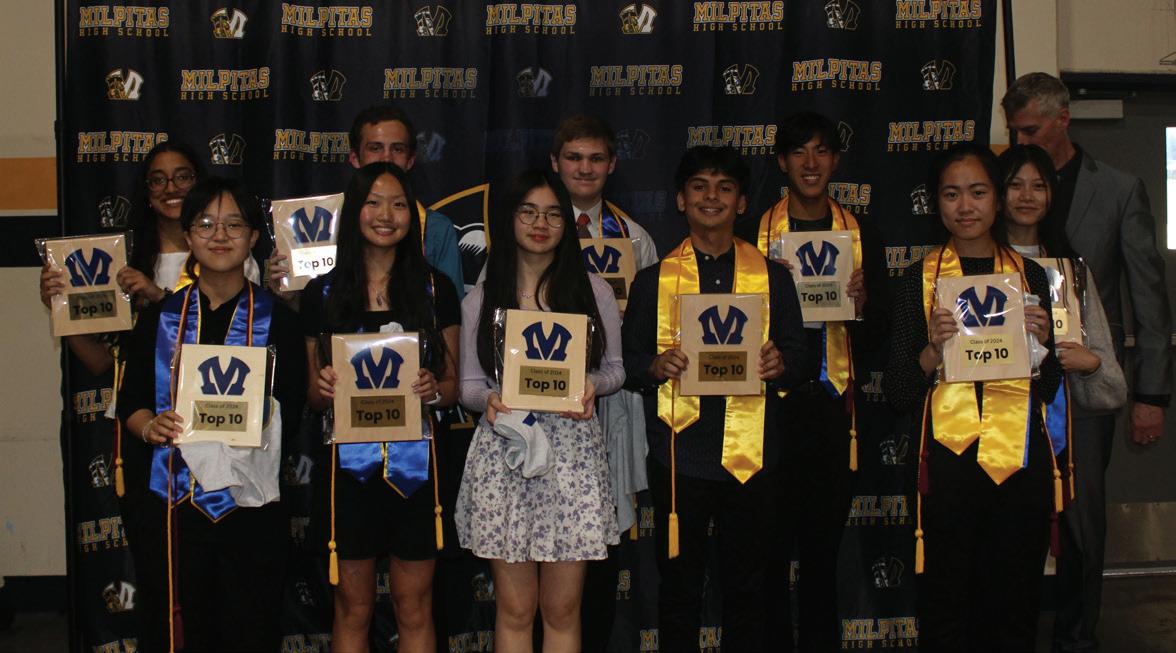
MHSTHEUNION.COM FOR THE LATEST UPDATES June 2024 VOLUME XXXVIII ISSUE III CONSUMER BOYCOTTING (PRO/CON) (2) POST-GRADUATION PLANS SPREAD (8-9) TAYLOR SWIFT DISAPPOINTS IN NEW ALBUM (12) CIF SCHOLARSHIP WINNER KERYSSA LI (6) SENIOR DITCH DAY (4)
STUDENT VOICE OF MILPITAS HIGH SCHOOL
MUSD board considers new parcel tax
SEE PAGE 16
A rendering of the Innovation Campus depicts students and teachers collaborating in a classroom. From MHS, 14 teachers and 83 students will be moving to the Innovation Campus in the 2024-25 school year.
Courtesy of San Francisco YIMBY
Courtesy of Jonathan Mach
SEE PAGE 16 Senior Awards Night, which
on May 22, celebrated seniors receiving academic awards, scholarships, and other recognitions. Keryssa Li and Roman Silivra were announced as valedictorian and salutatorian respectively from among the top 10 seniors (pictured above).
occured
Consumer boycotting is effective, challenges corruption
In our current political climate, many wonder what boycotts against companies actually achieve—are they effective? These multifaceted, commercial giants investing in human rights violations and other crimes may seem invulnerable to boycotting, but it is important to remember the strength iof our numbers. Consumer boycotting has the potential to be extremely effective.
The Ethical Consumer states that a boycott “involves pledging not to buy from a company, based on a specific ethical issue.” Successful boycotts like the Montgomery bus boycott, where protestors opted to walk or drive rather than ride a racially-segregated bus system, prove that the current efforts aren’t without precedent.
ior. According to Institution for Policy Research (IPR) associate Brayden King, a professor of management and organizations, it is rare for a boycott to hurt a company’s revenue, but it can negatively impact a company’s reputation. His research found that negative media coverage can “lead to a greater fall in stock prices and are more likely to cause a company to change its behavior,” especially if the company is well-known.

Without a doubt, revenue and reputation has a huge influence on whether or not companies listen to their consumers. According to the Ethical Consumer’s article titled a “History of Successful Boycotts,” the 2012 to 2023 boycott against G4S due to their operation of prisons where Palestinians were “held without trial and subjected to torture” and their other illegal activities in the region led G4S to agree to sell off “all its remaining business in apartheid Israel.”
Media headlines covering boycotts are key to pressuring a company to change their behav-
Considering this, we should vote with our money just as carefully as we would vote with our ballots. Minor differences of opinion between a company and consumer can be overlooked out of respect for diversity of thought, but companies invested and engaged in human rights violations or other unethical practices should face consequences. We shouldn’t be complicit in their crimes.
Boycotts aren’t always going to be effective, but it is inaccurate to call all boycotts ineffective from the get-go. One of the reasons boycotts fail is consumers’ lack of confidence—if people don’t believe they can make a difference, they may never even try to create change. However, if we move beyond doubt and towards determination, organization, and targeted pressure, we can actualize the power we have as consumers and hold businesses and organizations accountable for their actions.
CON
Consumer boycotting proves ineffective, hypocritical
Some people see consumer boycotting as a fantastic way to create a positive impact by putting your “money where your mouth is,” but is it all that effective? People choose to boycott certain brands as a tangible way to show disapproval of a company’s actions, rather than other means of expression like simply complaining on social media. The logic is that businesses are more likely to notice and care about lower revenue rather than mere outrage on the internet.
The recent conflict in the Middle East has led to an increase in consumer boycotting for companies like Sabra which supports Israel. Sabra is a company known for their hummus and regularly supports the Israeli Defense Brigade, according to The New York Times. Despite the increasing popularity of consumer boycotting, it still remains ineffective and not nearly as helpful as it is made out to be.
Students have become commodities, must embrace individuality
Students are no longer people. The second a child enters their freshman year of high school, they become nothing more than a brand. Colleges, private counselors, test-prep centers, schools, and other entities view these high schoolers as opportunities to capitalize on rather than as individuals with stories and lives. Due to society’s emphasis on attending top-tier universities, students begin to work towards building the most appealing brand very early on. Students do not allow themselves to explore their personality during high school because they are busy constructing a different one for universities. This dehumanization of students around the globe by universities and society throughout high school must be discussed as one of the most dire situations our world is currently facing.
When I entered high school, I quickly learned that if I didn’t compete, getting into a top college would
Parking
be impossible. My family and I began to seek advice from those around us in order to learn how to navigate a system that was completely foreign to us. Everyone we spoke to only asked us one question: “What’s your brand?” No one asked me about my passions, interests, aspirations, or desires; the most important thing was simply my brand. Even summer vacations, the part of the year every student looks forward to, are expected to be completely devoid of enjoyment and relaxation if one aspires to go to a competitive school. During one of my high school summers, my family chose to go to India to visit family and, instead of feeling excited to see my grandparents, whom I hadn’t seen in six years, I was panicking because I felt like my college application would suffer from a summer that colleges may look at as wasted. That summer, my

grandmother suggested that I help out at her charity that sent underprivileged girls in India to school solely because of the panic I felt regarding my application. The first thought I had when I heard her suggestion was that helping underprivileged kids as a project would be seen as “overdone.” Students are not commodities—they are people. They must be allowed to grow and flourish as individuals. We often forget that we own these universities, they don’t own us. As a student population, we must believe that we are more than just a couple of essay questions, a deposit, and a signature. We aren’t brands or products; we are students with passions, interests, aspirations, stories, lives, minds, personalities, and most importantly, hearts, and it is up to us to disrupt the current system by reminding it of exactly who we are.
permit regulations must be better
With the construction of the new performing arts center, teachers have been forced to relocate to the student parking lot, limiting the number of parking spaces for students. With the limited parking spaces and extra construction, the number of students without a parking permit unfairly using the lot has become a much more pressing issue and is insufficiently regulated. A simple solution to this problem is to assign parking space numbers to specific parking permits so students will have guaranteed parking spots when they buy their permit.
tomers boycotted In-N-Out in 2018 for donating to the California Republican Party when, in reality, the company had made extensive donations across the political spectrum, according to CNBC. People were quick to outrage and boycott the restaurant chain without taking the time to do the proper research.
Consumer boycotts are ineffective if people do not thoroughly research a business before boycotting.

The first major problem with consumer boycotting is how it’s often misinformed because people instantly believe what they see on social media as fact. While many people research the actions carried out by companies, many more blindly follow the latest trend because “everyone else is doing so” without doing their own research.
Another consideration is whether a company has a legitimate reason behind its actions and there is simply a lack of context. For example, some cus -
Over the past decade, numerous technology companies such as Facebook and Amazon have faced complaints over data privacy and worker treatment respectively. It would be unfeasible to boycott these companies since they are so commonplace. What is a consumer to do? It would be hypocritical for consumers not to boycott Amazon or Facebook, for example, but instead boycott Starbucks because it is easier to do so. If consumers truly want to stay consistent and boycott every single company with unethical practices they disapprove of, they may end up having to become a monk.
Consumer boycotts remain ineffective, morally problematic, and impractical. The reality of the matter is that the vast majority of consumers are far too quick in their judgment, and while some boycotts are more popular than others, most of them are far too small to make any significant impact.
According to bank technician Jim Hollenback, the main parking lot that people use right now has just over 290 parking spaces. Out of this number, 138 are reserved for staff, 8 for handicapped individuals, and 145 for students. There are only 145 spaces allotted for students. The solution to this problem that the school has presented is 25-35 over-
flow spots in the Marshall Pomeroy Elementary School parking lot, but it is a very tight cut.
Including the overflow parking, there is exactly enough parking for students who have bought a parking permit. Many times, students who do have permits don’t display their parking permits and there is no proper regulation of making sure that all the students parking in the lot all have permits. Some students have even gone multiple years without paying for a permit, yet they have not been penalized. On the other hand, some students who have paid for a parking permit have to park on the street near the school or in other places near school since there aren’t enough spaces in the actual parking lot. If there is a system in place to make sure that the students using the parking lot actually have a permit, it would force students

to abide by the parking permit rule. Beyond non permitted students using parking spaces, even if all these students bought permits, the school would not be able to fit all the students in the parking lot.
AGNA SONEJI
Assigning numbers to parking spots would make it efficient for students to find a parking spot because they would not have to drive around hunting for a parking spot. Students would be guaranteed a parking spot with the addition of numbered parking spots per permit without having to worry about not having a space to park when they arrive. The parking lot is a privilege for students, and there must be regulation on who is allowed and not allowed to park in it. With already limited spaces, students who are currently using the parking lot without paying for a permit should be penalized.
Anti-camping laws will not fix homelessness
The Supreme Court is set to address the legality of anti-encampment laws, with final decisions coming out in June after the April 22 hearing, according to the APNews article “With Homelessness on the rise, the Supreme Court weighs on bans on sleeping outdoors.” The case, the City of Grants Pass v. Johnson, asks whether the city violates the Eighth Amendment’s prohibition against cruel and unusual punishment through fining and jailing, according to Oyez, a law project from Cornell’s Legal Information Institute, Chicago-Kent College of Law, and Justia. Homeless individuals should not be fined and banned from sleeping in public places, as doing so violates their constitutional rights and perpetuates systemic injustice. Homeless individuals, already marginalized and disenfranchised, often have nowhere else to turn to but public spaces for shelter. According to the Stanford Institute for Economic Policy Research, about 70% of California’s homeless population
is unsheltered. Nationwide, on a single night in 2023, roughly 653,000 people were experiencing homelessness, and 40% of those individuals lived in unsafe places, as per the 2023 Annual Assessment Report from the U.S. Department of Housing and Urban Development. If the Supreme Court rules in favor of Grants Pass, it could mean communities, including our community, can clear out encampments, even if no available shelter or housing exists.
Another Eighth Amendment case, Robinson v. California (1962), ruled that narcotics addiction could not be criminalized because doing so would punish individuals based on their “status” rather than their actions, according to Oyez. This precedent established that laws targeting individuals for inherent characteristics violate the Eighth Amendment. Similarly, homelessness can be argued as a “status,” or a person’s characteristic that cannot immediately change. Fining and punishing
homeless individuals essentially violates this precedent, given that they cannot help their status of homelessness.

The Johnson v. Grants Pass case could hold broader societal implications for the issue of homelessness. Grants Pass essentially infringes on homeless individuals’ right to existence. According to the National Alliance to End Homelessness, Black and indigenous people are more prone to homelessness, with about 37% of the homeless population being Black, despite making up 13% of the US population. Anti-camping laws would only reinforce systemic discrimination based on identity. Rather than criminalizing homelessness, states and communities should invest in housing and shelters like tiny homes, a solution already being incorporated. Individuals can also take action by speaking out against anti-homeless policies, contacting their representatives in government, and lobbying for more humane options.
JUNE 2024
THE UNION 2
OPINIONS
PRO
AKSHAJ KASHYAP
MARYAM MOHAMED
SANVI PARVATIKAR
PAARTH GUPTA
EDITORIAL: The Opinion of The Union
On April 25, administration canceled CreatorScape, an art fair organized by One Long Story (OLS) and Youth Arts Movement (YAM), two chartered clubs on campus. Administration canceled the event due to security concerns, as five vendors planned to donate a portion of their proceeds to a humanitarian aid organization called Care for Gaza. Administration allowed the clubs to reschedule their event on campus as long as there was no fundraising for or mention of Gaza.
We, The Union, believe administration violated students’ rights to free speech. According to the Office of the Attorney General (OAG) of California, free speech is generally protected for students in public K-12 schools if it does not incite “a clear and present danger of unlawful acts on school premises, violations of school regulations, or the substantial disruption of the orderly operation of the school.” Based on the OAG’s guidance, we believe that administration should not have canceled CreatorScape, as they failed to provide evidence of a clear and present danger, and instead based its decision on a hypothetical fear: that a fundraiser for Gaza could lead to an unsafe environment on campus. Clearly, such speculative con -
cerns are not a valid reason to restrict student speech. Furthermore, in the past, clubs have raised money for humanitarian organizations linked to political issues, such as Environmental Society’s book drive for the Palestine Children’s Relief Fund. This event proceeded without security threats – and there is no reason to believe that the original CreatorScape would have been any different. Although we recognize administration’s duty to protect students is paramount, pure speculation does not warrant shutting down an event. We also recognize the national context has changed since Environmental Society’s event, due to recent unrest on college campuses over the Israel-Palestine conflict. However, there is no reason to believe that similar unrest may have occurred on our campus; vendors were simply fundraising for humanitarian aid in Gaza, not making a political statement or calling for any action. By hosting vendors that donate their own proceeds to an aid organization, students are not aligning the school or district with a side in the Israel-Palestine conflict or calling for action; they merely want to help desperate people in wartorn communities – a cause that clearly would not incite violence
U NIO N
or a disruption. Canceling CreatorScape also sets an egregious precedent for future fundraisers and events, creating ambiguity about what organizations and causes students can support. Can students no longer fundraise for any cause connected to a political topic, even if it’s a humanitarian issue? Can students participate in True Color’s National Coming Out Day event? Can students, and the district, proclaim that Black Lives Matter? While there may be a consensus of support for these causes in our community, there is likely a minority who are offended by these causes. Should students’ voices be silenced because of a hypothetical fear of conflict or retaliation? In the future, students may be discouraged from helping those in need or supporting causes due to a fear of potentially facing administrative repercussions. This suppression of student voice creates an environment where students are afraid to be active members of the community.
Schools should create concerned and compassionate students, and by canceling CreatorScape, administration has deprived students of the opportunity to develop as citizens and exercise their rights to free speech.
EDITORIAL: The Opinion of The Union
Students, staff must bolster fight-free initiatives for safer campus Admin overreacts by
A fight-free campus is essential for fostering a non-disruptive learning environment for students. To reduce fighting, the school administration must take steps beyond the current Fight Free Campus Challenge (FFCC), and students need to stop sensationalizing fights. Compared to the 2022-23 school year, which had 21 fights on campus, there have already been 30 fights from the start of FFCC on October 13, 2023, to May 21, 2024, according to MHS administration.
To reduce fighting, administration needs to draw attention to the issue school-wide. We commend Principal Wohlman for dedicating time to promoting the FFCC by introducing the initiative to students in the theater; however, the FFCC has remained an initiative almost exclusively promoted by Wohlman.
Other staff, especially teachers, need to become involved and speak against fighting, possibly by promoting the FFCC or another project inside their classrooms. Because teachers often have a closer connection with students than administration and can more directly engage with students, students
may be more willing to listen.
In addition, MHS can hire behavior coaches for students who have fought, as less than 2% of students (48 students from October 13, 2023, to May 21, 2024) at MHS have participated in fights. The FFCC presents a broad message that many can support, but few can directly have any impact on the issue. Behavior coaches improve school climate by addressing behavioral challenges and teaching students emotional management skills, according to the article “What Does a School Behavior Coach Do?” on the Education Service Center Region 13 website.
Nearby school districts are already looking into mental health and counseling services to reduce fighting. Palo Alto Unified School District, for example, has hired 12 new behavioral intervention coaches for the school sites and fully staffed a second therapeutic services program at Fletcher Middle School in 2023 as part of its plan to address student violence and other harmful behaviors, according to the article “Palo Alto Unified Sets Forth Plan for Preventing Violence” on the Palo Alto Weekly website.
We understand that there have been recent hurdles in funding for MUSD, but the district leadership needs to consider its priorities. The safety of students should be the school’s number one priority, and we need to continue allocating resources to reduce fighting on campus.
Moreover, students can help reduce fighting by reducing the sensation around it. During a fight, students often take videos instead of calling for help. These videos are spread for entertainment, thus making fights considered unserious even though it can have significant consequences on students’ mental and physical health. A culture that treats fights as spectacles will create more fights, leading to an unsafe school environment.
While there have been attempts to reduce fighting at MHS, there is still not enough participation in the FFCC from both staff and students to stop fighting significantly. By implementing more specific programs and encouraging participation from teachers and students, we can change the culture at MHS and have a safer environment for all.
LETTER TO THE EDITOR
Senior Year: A Survival Guide
Congrats on finishing the school year! Here is a parting gift from me on behalf of all the seniors: five tips for having the best possible experience in your senior year of high school.
1. Learn to have internal motivation. Do things out of genuine interest, passion, or a feeling of duty, not because of college applications or parents. Senior year will leave you lacking in external motivation, so be prepared to substitute new ways of staying motivated. Think about
Those who would like to advertise in The Union can contact the Ad Manager at milpitashightheunion@ gmail.com. Ads are available in full page, half page, quarter page, and business card sizes. Inserts are also accepted. Upon request, The Union staff will customize and design your advertisement. ADVERTISEMENTS
SUBSCRIPTIONS
Yearly subscriptions to The Union are available for $25. Contact the Business Manager for more information.
CONTACT US
1285 Escuela Pkwy, Room E-9 Milpitas, CA 95035 milpitashightheunion@gmail.com
STAFF
Savan Bollu • E ditor -in -C hi E f
Ruby Bui • News Editor
Dhara Mehta • Asst. News Editor
Sidhant Burela • Op-Ed Editor
Paarth Gupta • Asst. Op-Ed Editor
Tanisha Varma • Features Editor
Maryam Mohamed • Asst. Features Editor
Erick Johnson • Sports Editor
Akshaj Kashyap • A sst. Sports Editor
Sanvi Parvatikar • Lifestyle Editor
Tiffany Ng • Asst. Lifestyle Editor
Kevin Ting • Entertainment Editor
An Nguyen • Asst. Entertainment Editor
Agna Soneji • Spread Editor
Yunxi Fang • Asst. Spread Editor
Akshaj Kashyap • Business/Ad Manager
Sanjit Roy Journalism Advisor
HAVE AN OPINION?
HAVE A GRIPE WITH THE SCHOOL? WANT TO PRAISE THE SCHOOL? WANT YOUR VOICE TO BE HEARD?
WANT TO REPRESENT THE STUDENTS?
SUBMIT ALL LETTERS TO MILPITASHIGHTHEUNION@GMAIL. COM
NOT FORGET TO WRITE
your long-lost hobbies, favorite school subjects, personal projects, or maintaining a decent sleep and workout schedule: the possibilities are endless!
2. Choose the college and major YOU want. Likely, your parents, your friends, or even your own conscience will pressure you, especially to go to the most prestigious college you’re accepted into. But there is more to life than that. A better mindset is to go for the college you think will offer you the widest range of opportunities: opportunities to enjoy doing your favorite sub -
ject/sport, learning opportunities, job opportunities, social opportunities, opportunities to meet diverse people/ideas, etc. It’s natural to prioritize once you have opportunities, but pursuing opportunities that don’t yet exist is difficult.
3. Touch grass and hug your friends. You only have a few months left at MHS with all your friends. Invest that time in making lasting memories. Be brave and hug a friend you’ve never hugged before. Invite your friends to meet in person, rather than just texting online.
Go to homecoming, even if you don’t like music. Go to prom, Trojan Olympics, the senior picnic, senior field trip ...senior ditch day... and anything else.
4. Plan college stuff early. Make spreadsheets of colleges. If you need teacher recommendations, ask your teachers early (summer/early fall). Become best friends with your counselor (shoutout to Ms. Cler!!); ask them about MHS counseling’s sample college information organizer spreadsheet. You will have about 15 college portals, so organization is key.
5. Become independent. Start thinking about how you would do things if you were completely
on your own—do you know how to get food? Do you know how to do basic household chores? Do you know how to manage finances? If not, start now! Set boundaries with your parents. Most importantly, don’t stress. Senior year will still have stressors; wait to start your victory lap until you’re a few months closer to graduation than you are now. But everything will happen in due time. As Mr. Cummins (AP Gov teacher) says, you will go to the college you were destined for. Work hard, have fun. <3 See you around sometime! All the best, Isaac Jones, Class of 2024
3 THE UNION EDITORIAL JUNE 2024
STUDENT VOICE OF MILPITAS HIGH The Union is a designated public forum for student expression without prior review by school officials in which students make all final decisions on content. The views in The Union are those of the writers and do not necessarily reflect those of the school, students, administration, or Milpitas Unified School District.
Union is published
the Journalism class of Milpitas High School.
The
by
DO
DOWN YOUR NAME AND GRADE FOR MORE STORIES, VISIT US AT MHSTHEUNION.COM
The
student voice
cancelling CreatorScape, suppresses

Tomlinson plans to leave teaching position to travel across globe
By Maryam Mohamed
Traveling the world is no small feat, but Spanish teacher Allison Tomlinson wants to turn that dream into reality.
Without parents or children to take care of, Tomlinson decided last year to travel the world with her husband, who also loves to travel, she said. Tomlinson isn’t retiring, but she is going to permanently leave her job at MHS after the school year ends, she added.
“I’m still healthy, (I’ve) got lots of energy, and this is a great time to take advantage (of my life) instead of waiting until retirement,” Tomlinson said. “I think a lot of people put off their dreams, especially because they’re busy with family and things, but I don’t have to do that.”
Tomlinson plans on starting the journey this September by traveling to Alaska to see the northern lights, which is the only U.S. state she hasn’t visited, she said. Afterward, Tomlinson plans on traveling to Japan, Micronesia, New Zealand, Southeast Asia, Nepal, and India, she added.
“We haven’t planned beyond that,” Tomlinson said. “We’ll definitely hit Europe and also Latin America. I’m not sure about Africa; it seems to be adding a lot to the cost. And luckily, I’ve been to Africa a couple times.”
Tomlinson studied abroad in two different countries as a college student and went backpacking in Brazil for six months after college, she said.
“I thrive when I’m changing my schedule,” Tomlinson said. “I
don’t do well with routines. I find them really boring.”
Tomlinson planned the mostly westward travel route herself, she said.
“First, I tried a travel agency that specializes in tickets around the world, but it had really rigid rules as to how many segments you could have on each continent,” Tomlinson said. “I think it ended up being much cheaper to do it (the planning) myself.”
Income from renting out a house in Georgia paired with Tomlinson’s saving habits allows her to be financially prepared for the journey, she said. However, Tomlinson and her husband still need to prepare for vaccines, healthcare, and visas, she added.
“I have a big list (of things to prepare); moving is always a pain in the butt,” Tomlinson said.
Prior to teaching at MHS, Tomlinson taught in Spain for two years, she said. She enjoyed the flexibility of teaching in Spain, where teachers didn’t bring work home, she added.
“I love working with these (MHS) students and the school,”
Tomlinson said. “I just don’t like how much of my life is dedicated to my profession.”
Tomlinson taught Spanish I and II at MHS for three years, she said.
“It’s been a really nice experience, because I felt like I really connected with a lot of students here on a personal level,” Tomlinson said.
Sophomore Janvi Balakrishnan, who was Tomlinson’s Spanish student in both her freshman and sophomore year, cherishes
Wohlman speaks on first year as principal, goals for next year
By Paarth Gupta
Principal and Chief Innovator of Milpitas High School and New Campus Programs Greg Wohlman’s first school year at MHS will come to an end soon. Wohlman sat down with The Union to reflect on and discuss what he has learned during his first year as principal.
Wohlman would describe his first year experience at MHS with the word “grateful,” Wohlman said. He is grateful to work with the students and staff in Milpitas, he added.
“To be active and present with the students and staff every day has been a huge highlight,” Wohlman said. “It’s just an amazing place to be.”
Wohlman believes that, over the past school year, he’s been able to change the role of the principal to be more involved, not only at the school level, but on the district level as well, Wohlman said.
“Being principal is about communicating with district leadership and community members and gauging what’s coming,”
Wohlman said. “That’s just something I’m processing all the time. The decisions I make, or we make, and the conversations we have are going to have impacts throughout the district.”
Wohlman’s main goal for the year was to be as visible as possible to students and staff, he said. Seeing as MHS is like a constant moving entity, the more he is in motion, the more likely he is to see, feel, and respond to concerning events faster, he added.
“A goal for myself was to visit somewhere between five and 20 classrooms a day and I’ve done that every day that I was working on campus,” Wohlman said. “But is that enough? Was that a big enough goal? I’ll question that, I’m sure. But maybe the achievement is that I can walk through the campus and everybody knows who I am.”
After working at many small and large schools over the years as an administrator, Wohlman believes that MHS is one of the biggest schools he has worked at so far, he said. The school’s scale has proven to be challenging at times, he added.
‘Rite of passage’: Seniors, staff comment on senior ditch day
By Savan Bollu
531 seniors were absent for at least part of the school day on May 26 of last year, and 491 seniors were absent on May 27 the year before that, according to statistics provided by senior staff secretary Lori Louie. The reason for these many absences is senior ditch day—a student-designed day when many seniors choose to skip classes, unsanctioned by the school.
because there were scheduling conflicts with school events on other potential dates, they said. Mohammed will be participating in ditch day and hopes to do something outdoors, they added.
“I feel like our administration and our teachers have enough heart to let it slip for one day,” Mohammed said. “I mean, it’s the day. You’re supposed to leave a legacy on campus or do something on campus, and this is the thing.”
her relationship with Tomlinson, she said. Tomlinson was her “constant” as her life fluctuated, and she would visit Tomlinson’s room before, during, and after school every day, Balakrishnan said.
“My current favorite memories are after school when she’s playing music and sometimes we’d be dancing,” Balakrishnan said.
Tomlinson and Balakrishnan exchanged personal emails to keep in touch in the future, she said.
“I felt like she deserved it (the trip) and her life here wasn’t as fulfilled,” Balakrishnan said. “So I felt really happy with the decision she made.”
Sophomore Mikayla Serna, who was also Tomlinson’s student for Spanish I and II, is also proud of Tomlinson for choosing to explore the world, she said.
“‘I’m really sad because I know that I could talk to her whenever I’m stuck with something, but I’m also happy for her,” Serna said. “She’s going to go explore new things and move on with her life, and there’s probably better opportunities for her outside of school.”
Tomlinson loves encouraging students to study abroad in college, which many students told her was one of the best experiences of their lives, she added.
“I graduated from high school, I went straight to college, and then I went to find a career, and you do this ladder thing,” Tomlinson said. “Every once in a while, ask yourself if you want to just take a step off the ladder for a minute. (...) Grab that opportunity while you have it.”
“I think the challenge is making sure that 3,000 students know I’ll listen, that I care, and that I want to protect them and give them the best opportunity to succeed,” Wohlman said.
For next year, Wohlman hopes to maintain his focus on connecting with students and remaining as visible as he can in order to strengthen bonds and make new ones with as many students as possible, Wohlman said. He hopes to continue his efforts to establish connections past just the first year, he added.
“This is who I am,” Wohlman said. “So, next year is not going to change. The incoming ninth graders will know who I am, and the tenth, eleventh, and twelfth graders will still see me as much as they saw me last year.”
Wohlman’s biggest takeaway from his first school year at MHS has been that being the principal here is all about serving the people and the community as closely as possible, Wohlman said.
“If I just stay in my office every day and do the paperwork, it changes the position from a people job to a paper job,” Wohlman said. “The position is about people, which means you need to connect with people. When you don’t do that, you run the risk of making decisions on paper that aren’t about your people.”
According to Assistant Principal Jonathan Mach, MHS loses approximately $85 per day per student who is absent—meaning last year’s ditch day absences may have reduced school funding by up to $45,135.
“We get paid by student attendance; if the students came to school (for) one period, we get paid for the whole day, but when they’re out the whole day, we don’t get anything, so from that perspective, it’s not good,” Louie said.
Phone call and message volumes in the attendance office often double or triple on ditch day, Louie said.
“It causes a lot of havoc here at school,” Louie said.
Although students may receive a cut for an unexcused absence on ditch day, cuts typically only affect students if they’re frequent cutters, as it takes six separate days of cuts for a student to receive detention, Louie said. Some parents also excuse their students’ absences, Louie said.
“I don’t condone parents lying for their students,” Louie said. “A lot of parents will call in and say, ‘Oh, they’re sick.’ If you’re letting your child do ditch day, just say it.”
Senior Zubia Adeen Mohammed, whose pronouns are they and them, is the administrator of this year’s senior ditch day Instagram account, Mohammed said. They took the initiative to plan ditch day to ensure that the tradition continues, especially since other traditions like certain school dances died out after the pandemic, they said.
“I was like, ‘This is literally one of my favorite traditions of the year, so I’m totally gonna get involved,’” Mohammed said. “I love the traditions that we do before graduation—all of it.” Mohammed decided on the designated ditch day at the end of May
Mohammed understands the concern of funding loss on ditch day, but believes it’s not as significant as funding lost due to longer-term absenteeism, they said.
“One day of people missing is not as much (funding lost) as when individuals are regularly missing school; that’s a bit more important,” Mohammed said.
Social studies and AVID teacher Frank Castro, who has taught for 29 years, regards senior ditch day as “inevitable” and “a rite of passage,” he said. He recommends that seniors be careful and stay safe on ditch day, he added.
“Personally, I’m not condoning it,” Castro said. “I just accept it, because it’s going to happen one way or the other. So like I said, I’m not going to fight (...) a tidal wave.”
Around 90% of Castro’s students are absent on ditch day, Castro said. He typically finds out about the ditch day date beforehand and schedules classes so there isn’t a test on that day, he added.
“Most of the kids here, they work hard; they do what they’re supposed to do,” Castro said. “They take a day; I don’t have a problem with that.”
Louie, who has been an attendance secretary for 25 years, has noticed that fewer seniors have been participating in ditch day over time, she said.
“There’s so much pressure for your grades and school and college and stuff that I don’t think it’s as widely participated in,” Louie said. “There’s still a lot of participants, but surprisingly, there are more that stay” in school.
As a parent of former students, Louie disapproves of ditch day, she said. Ultimately, she recommends that participating seniors be careful, she said.
“If you participate in it, just be safe,” Louie said. “Be smart; be safe.”

JUNE 2024 FEATURES THE UNION
4
Tomlinson celebrates her birthday with her students during her third-grade teaching assignment in Spain.
Courtesy of Allison Tomlinson
Tanisha Varma | THE UNION Wohlman hopes to continue making bonds with students next year.
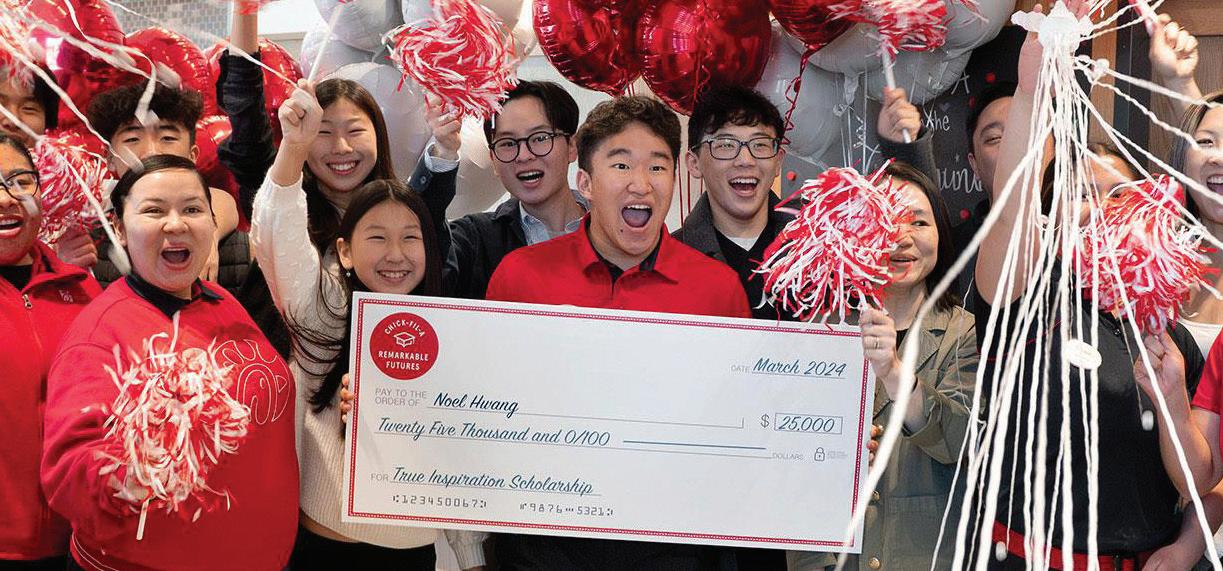
from
Noel Hwang shares story, discusses accomplishments, faith
By Erick Johnson
Senior Noel Hwang became the recipient of a $25,000 scholarship from Chick-fil-A, Chick-fil-A announced on their website. The scholarship was awarded based on a student’s academic performance as well as being able to demonstrate care and commitment to serving their communities, the announcement said.
One day, Hwang was told to prepare for an “parent appreciation” interview, which was to be held at his workplace, he said. When Hwang stepped out to where the interview would be held, he saw a large crowd, cameras, and the Chief Executive Officer of the company, Andrew Cathy, waiting for him, Hwang added.
“I want to present you with a $25,000 scholarship from Chickfil-A,” Cathy said as he presented a large check to Hwang, according to ABC news.
When Hwang turned around, he saw all his friends who had skipped school to be there and celebrate with him, he said. Hwang received recognition from Daly City news networks, where Hwang works, and the mayor of Daly City, he added.
“The biggest thing that makes Noel successful is how social he is,” junior Timothy Tu, Hwang’s DECA partner, said. “He is the type of person that can talk to anyone about anything. He is not afraid to ask questions and is not scared to do anything.”
A major aspect of Hwang’s life is his work at Chick-fil-A, which began last summer, Hwanghe said. He joined Chick-fil-A’s Leader Academy, where he learned about leadership and service while managing a community project,
he added.
“We reached out to a senior center and we held a talent show for the elderly,” Hwang explained.
“Sometimes they have memory problems, so we took Polaroids with them so that they could remember it.”
Hwang also connects with his community through his church, although during his freshman and sophomore year he decided to step away from his faith because he could not understand it, which was difficult because his father is a pastor, he added.
“In junior year, I really had that moment where I felt very helpless,” Hwang said. “I was like, ‘I feel so hopeless in this moment. I feel like I’m like nothing. Do I really even like matter in this world?’”
Encouraged by his friends and family, Hwang decided to give his family’s faith another chance and had an emotional realization, he said.
“I just don’t have another place like church,” Hwang said. “Every time I step into that building, it’s so healing.”
Hwang is also the president of God First, a Christian club on campus that allows students to come together to discuss and share their faith, he said. Even though Hwang rarely has a chance to meet the members outside of the club, he believes that there is a special connection between them, he added.
“I don’t know who they are, where they’ve come from, or even what grade they’re in,” Hwang said. “But when we go in there, we’re all there for one thing, and I hope they know I can always support them.”
Hwang is also dedicated to
Student-entrepreneurs discuss experience of founding, managing cosmetic businesses
By Dhara Mehta
Although most people decide to wait to start their own businesses until they receive their undergraduate degrees, some students have decided to become entrepreneurs in high school—running their own cosmetic businesses to make money and pursue their passion.
Junior Vince Nguyen’s interest in his hair-cutting business started when he was a child, he said. In his youth, Nguyen always got bad haircuts and felt he could do a better job himself, he added.
“I just started on my own hair,” Nguyen said. “No training; I taught myself how to cut.”
Similar to Nguyen, senior Simran Seth also learned how to do mehndi (henna), which is temporary body art created by the stains of the henna shrub, from YouTube tutorials and practice, Seth said.
“I freestyle and did (mehndi) on my own as much as I could,” Seth said. “I tried looking at YouTube videos of how to do it, but honestly, a lot of it was self-taught.”
Seth’s passion for mehndi came from her love for her culture, she said.
“When I started seeing different henna artists performing at different weddings, I got really excited and I wanted to do it on my own,” Seth said. “So this way, I could control my own design.”
Junior Vandita Vaidya’s passion for doing acrylics and nail art came from her childhood, she said.
“Ever since I was young, I always had an obsession with collecting nails with no designs on them so I could create my personalized nails myself, though they weren’t, of course, professional,” Vaidya said. “I always felt a feeling of being at peace whenever I was involved in nail art.”
Running this business allows for her to connect with neighbors, close friends, and family on another level, Vaidya said.
“I’m running (this business) because I was always into helping out the community and in different ways, such as helping out my neighbors with hair and makeup,” Vaidya said. “Now I can con-
Students shoot guns as hobby, hold safety to highest caliber
By Sidhant Burela
While many students have common hobbies like cooking or playing piano, a few Trojans have picked up a more niche hobby: target shooting. Senior Casandra Oliva was first introduced to the sport of shooting through her father, who served six years in the U.S. Navy, Casandra Oliva said. Her favorite guns to shoot are a 0.22 caliber handgun and 0.22 caliber rifle, she added.
athletics, having participated in swimming, wrestling, cross country, and track and field over his middle and high school years, he said.
“I went into wrestling my seventh grade year, and I was devastated,” Hwang said. “It was so hard, I ended up quitting a few months in.”
In order to get in proper shape for a return to the wrestling team, Hwang decided to enter cross country in seventh grade, he said. Over his time in middle school, Hwang saw improvements in both his cross country and wrestling performance, and he managed to make the varsity swimming team as a high school freshman, he added.
“My philosophy is if you just focus on improving yourself to the max, then the subproduct of that would be that you become better than the average,” Hwang said. “So I tried really hard not to compare myself to others.”
Hwang is always trying to make people laugh and smile constantly, junior Sarra Yadav said. Noel is also very approachable and easy to get to know if you take the time to talk to him, she said.
“He is a genuine guy,” she said. Hwang is a student dedicated to others, and that separates him from the rest, Tu said.
“Noel is such a unique person, it is hard to put into words; you have to meet him,” Tu said.
Hwang is committed to the Indiana University’s Kelley Business school, he said
“I look back on my life and I say, ‘I didn’t do that much. And I don’t really deserve all of this,’” Hwang said. “But there’s just been so many blessings and thank God for that.”
nect with them on a different level by providing them services to make them feel confident about themselves.”
Seth, on the other hand, runs her business to express her love for her culture as well as possi bly influence those around her to start their own businesses, she said.
“I think it’s a good way to start showcasing culture at least and giving cheaper options for (mehndi) high school stu dents,” Seth said. “This way, people are more inclined to getting (mehndi) done.”
One of the biggest obstacles Vaidya faced was getting those around her to accept her business, she said.
“As an Indian girl, I feel like (pursuing a cosmetic career is) really looked down upon by the (Indian) community,” Vaidya said. “If I were to pursue this career, then the stereotypes would come into play. mainly looked down upon because (the Indian community)
“I first started with the basics like learning how to clean it (the gun), how to take it apart, how to hold it, before I even had any live rounds in it,” Casandra Oliva said. “I was personally really scared when I first went (into the gun range) because it was very loud, but once I did go in, it took a bit of time to get used to the sounds.”
Through practice and constructive criticism from her father, Napoleon Oliva, Casandra Oliva was able to improve, she said. She first started off by dry firing, which is when you fire the gun with no ammunition, and eventually moved to firing with real bullets, she added.
“I would say the fear is still in the back of my mind, but I have learned to cope with it and come to terms with it,” Casandra Oliva said. “I’ve been more comfortable knowing (...) how to safely use the gun.”
Napoleon Oliva has been his daughter’s coach for as long as she has been learning, he said. Indoor gun ranges are especially noisy, so staying focused is extremely important, he added.
“While you may be good and sound in your bay (designated shooting section), you need to
be aware of what others are doing in the bays next to you,” Napoleon Oliva said. “At the same time, I wanted to make sure that she wouldn’t do something that would violate safety rules, so that nobody would get hurt, including herself.”
Like many other hobbies, the skills Casandra Oliva gained from shooting have helped translate to other parts of her life, she said.
“It helps me clear my mind a bit and helps me calm my breathing,” Casandra Oliva said. “During classes and tests, I’m able to control my breathing and anxiety.”
Senior KavinKumar Sainathan picked up shooting as a hobby mostly due to the video games he played, but has only gone to an outdoor range four times, Sainathan said.
“I grew up playing Call of Duty, so I guess it is the fact that you can kind of do it in real life (that interested me),” Sainathan said. “But in real life it’s not some sort of video game.”
Sainathan’s first experience at the outdoor range was different than what he expected, he said.
“You order different packages based on what you want to shoot, so I got one of each type of weapon,” Sainathan said. “They (employees) started me off with a pistol just to familiarize myself with everything. The people there help you a lot so you just have to trust them.”
When handling any type of weapon, the number one priority is safety, Napoleon Oliva said. “I know people have their biases against guns and other weapons systems, but it always comes down to safety,” Napoleon Oliva said. “The more you know about it, the less it becomes something that you are so afraid of.”


want(s) to think that you really she said. Starting a business comes with a lot of pressure and creates expectations, Seth added.
“Figuring out whether I was good enough to even start a business (was challenging) because a lot of mehndi artists are middle aged women who have had nine or 10 years experience,” Seth said. “I kind of questioned whether or not I was okay or capable to do a mehndi business or start one.”
Nguyen’s major obstacle was the process of actually learning how to cut hair, he said.
“I think learning how to cut hair, and then trying to get people in my chair (was the hardest part),” Nguyen said. One of the biggest pieces of advice that Nguyen could give to those who want to start their own businesses is to spread the word and to publicize your business, whether it be via social media or by word of mouth.
“Start small and (your business) will grow,” Seth said. “I think if you’re passionate about what you’re doing, it can only go up from there.”
FEATURES JUNE 2024 THE UNION 5
Noel celebrates his scholarship offer of $25,000
Chick-Fil-A with his friends, family, and coworkers.
Courtesy of Chick-fil-a
Courtesy of Vandita Vaidya
Vaidya works on a set of nails for her business.
Courtesy of Casandra Oliva
Oliva practices shooting at Elite Armory indoor range located in Tracy.
Keryssa Li awarded two CIF scholarships for athletic, academic accomplishments
By Ruby Bui
Senior Keryssa Li received the $10,000 California Interscholastic Federation (CIF) Scholar-Athlete of the Year Award, which is given to one Californian male and female athlete, she said. She was also awarded the fall CIF Spirit of the Sport Award, which is a $2,500 scholarship given to one Californian male and female athlete during each season, she added.
The CIF Spirit of the Sport Award is based on outstanding community service involvement, leadership, and sportsmanship, while the CIF Scholar-Athlete of the Year Award recognizes strong academic achievement and community involvement, Li said.
“I want to continue running in college, not at a professional level, but I’m hoping to join some sort of athletic club or a hobby on the side,” Li said.
Li regularly participates in math competitions, which helped her stand out and receive the scholarships, she said. She is a three-time qualifier for the American Invitational Mathematics Association (AIME), and is a National Merit finalist, she added.
“I think one of the things I’m most proud of is my academic
journey here because I really prioritized school and grades, and I think I’ve done pretty well,” Li said.
Li became the captain of the cross country team during her senior year, and participated in both cross country and track and field for six years, she said. Li proposed the idea to create a captain position to head cross country and assistant track coach Yohaness Asnake, who ultimately chose her to become the captain, Li added.
“I got into running initially around elementary school—third or fourth grade,” Li said. “One incident that I remember is, once, in fourth grade, my teacher Mrs. Schwartz said I was a really fast runner during PE (physical education), and she made me race against an older boy. I think the adrenaline and the experience just made me really interested in running.”
Although Li has many commitments and responsibilities like academics outside of track and field, her ability to maintain a balance is her most outstanding quality, track and field distance and cross country assistant coach Dillon Hu said. Overall, Li’s communication skills make her a team player and a leader, he added.
“She’s a very well-rounded ath-
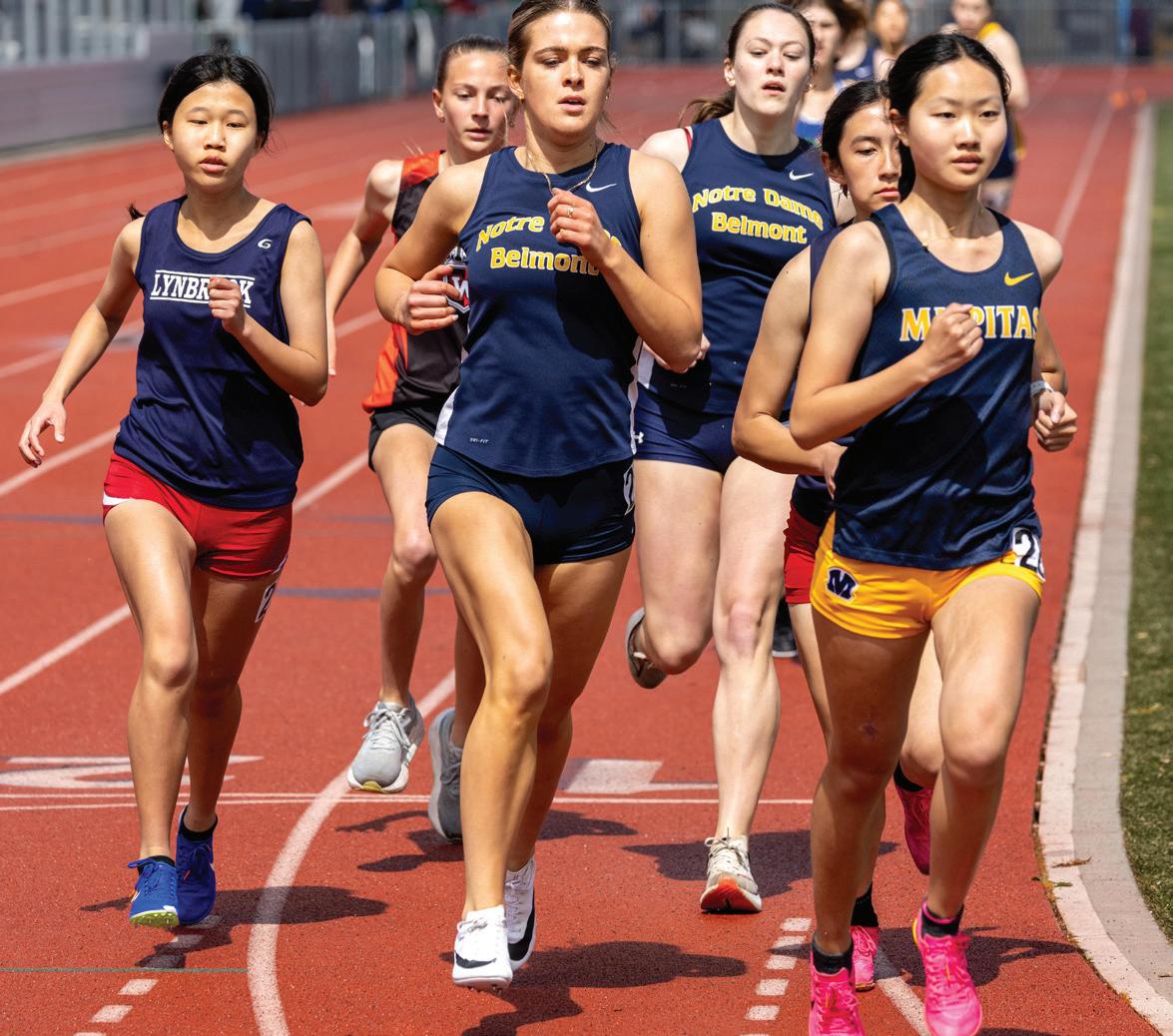
lete,” Hu said. “She has speed, she has endurance, she doesn’t really have any true weaknesses, (and) she’s very versatile. The jumps coach was shocked that she was a distance runner because she was apparently very fast in the 200 (meter dash).”
Li achieved her personal record for cross country at Crystal Springs, where she ran five kilometers in 20 minutes and 41 seconds in sophomore year, she said. For track and field, Li ran the 1,600-meter dash in 5 minutes and 29 seconds in sophomore year, and ran the 800-meter dash in 2 minutes and 29 seconds this season, she added.
“My parents really helped me out so much and they support me endlessly,” Li said. “They drive me to meets and competitions, and my mom makes me really good food. They always cheer me up when I’m down and provide me with motivation.”
Senior Kaylana Chuan, who met Li in cross country during their freshman year, believes their friendship was strengthened by the many things they have in common, she said.
“She’s been the best teammate ever,” Chuan said. “She’s super supportive, and whenever I’m not performing well, she cheers me up. And even though she’s faster than me, she still runs with me during the long runs.”
Unexpected medical complications with Li’s thigh resulted in surgery, forcing Li to end her senior year cross country season earlier than expected, she said.
“I totally wanted to lead the team in the states, and it just felt like I didn’t have a chance to improve myself anymore, but I think I picked myself up after that, and really dove into the track and field mentality that I wanted to improve,” Li said.
Besides her family, Li’s friends and coaches are also her biggest supporters, she said.
“They’ve imparted on me a major message, which is (that) achievements, numbers, and stuff like that aren’t really important,” Li said. “They are not the most important aspect of track—I think it’s improving yourself and trying to be the best version of you.”
Dillon Hu inspires new team culture, forms bonds as new track and field assistant coach
Dillon Hu, the assistant coach for MHS’s track team for one year, has been passionate about running ever since his days as an athlete in middle school, which would eventually lead to him running long distance for UCLA, Hu said.
Hu had not always been a runner, nor was he particularly interested in running initially, he said.
“I started running because I wanted to just stay in shape for basketball,” Hu said. “But eventually, after a while, I just really started it, and I realized I was going to be pretty good at it.”
The biggest factor in Hu’s enjoyment of the sport was simply the individuality and goal-oriented nature of running, he said.
“Running is one of the few things that you have completely under your control,” Hu said. “How fast you run on a particular day, how well you’re doing, how much you’re improving it’s all within your control.”
Hu had been coaching on and off for a while and is currently coaching for his third year at MHS, Hu said.
“My two high school coaches were really fantastic and they
made a huge difference in my life,” Hu said. “I always thought it’d be cool to give back and try to coach on my own.”
Hu’s favorite part about coaching is seeing kids becoming more invested in running as the season progresses, Hu said.
“You just keep these kids who just came in for whatever reason, and then they’re still sticking around after the season ends,” Hu said. “It’s not necessarily the fast kids.”
As a coach, Hu always tries to set goals for his athletes by preparing workouts, exercises, and goals, senior Rushay Lad said.
“I think with Coach Dillon coming in, we became more organized,” Lad said. “We had a whole spreadsheet full of what we were doing every day, along with paces and predicted mile times.”
Lad has felt a significant improvement in his own athletic performance this year thanks to the changes that Hu has brought to the track team’s routine, Lad said.
“Last year, my PR (personal record) for the 1600 meter was about 5 minutes and 40 seconds,”
Lad said. “And then about a month ago, I hit 4 minutes and 56 seconds. That was my whole goal
Bahena, Ybarra commit to Cañada College soccer team
By Tanisha Varma
Senior Andre Bahena will continue his educational and athletic journey at Cañada College in Redwood City this fall for soccer as a center forward, he said.
Senior Hugo Ybarra will also be committing as a goalkeeper, he said. For Ybarra, Cañada offered a good injury rehabilitation process and recruited him despite his recent leg surgery, he added.
“A month ago, I tore my meniscus; I had to get surgery for it,” Ybarra said. “Once I started telling (college) coaches that I’m going to be hurt and unable to play my freshman season, a lot of them said, ‘Sorry to hear that, but I don’t know if this is the right spot for you.’”
Ybarra continued to search for schools when Cañada College reached out to him, he said. Cañada’s coaches said they would take Ybarra with his injury and help him through the process, he added.
“I really like the coaches,” Ybarra said. “They’re really trying to get the best out of me, so with the support combined with the facilities, it’s just the best fit for me.”
As for his education, Ybarra will be majoring in business administration and plans to transfer to a University of California or outof-state four-year university, he said. He also plans to work while pursuing his education and soccer at Cañada College, he added.
“I definitely plan to coach soccer to younger kids while in college to give back to the community and help other kids who want to be a goalie the way I did,” Ybarra said.
Bahena will also be majoring in business and admires how the Cañada College coach prioritizes students transferring to fouryear universities after two years of community college, he said.
“Among the other coaches I talked to, he was the first coach that prioritized us transferring to a better, higher school,” Bahe-
na said. “He prioritized all students having a 3.2 or higher GPA and the whole team seemed very structured and disciplined.”
For soccer, Bahena’s goal is to transfer to any school with a Division I (D1) soccer team, he said.
“I want to keep pursuing soccer; maybe not here, maybe out of state or out of the country, but I want to pursue D1 soccer first,” Bahena said.
While at Cañada College, Bahena will work at the Stanford University cafeteria, which is a 20-minute drive from Cañada College.
“I’ll probably work there for the two years,” Bahena said. “It’s like catering in the cafeteria where the students eat. It involves changing plates, putting the food out, stuff like that.”
Ybarra feels more comfortable knowing that he will have a friend from high school at Cañada College.
“It’s definitely a relief,” Ybarra said. “Obviously, it’s nice to go meet new people, but just having those familiar faces is a good thing.”
Jason Jattan, the assistant coach for both Milpitas and Cañada’s soccer teams, helped Bahena and Ybarra with the recruiting process, Jattan said. Jattan also attended Cañada College out of high school and admires the college’s unique goals, he added.
“The facilities are top notch and the support system for education is really good,” Jattan said. “We’ve turned a lot of 2.8-GPA students into 3.6 GPAs, which opens up opportunities for university and playing soccer at the four-year level.”
Cañada College transferred out almost every sophomore the past year through academics or an athletic scholarship, Jattan said. He will be helping Bahena and Ybarra through the whole process up until transferring to another university, he added.
“I’m excited for both of their futures,” Jattan said.
for the entire season.”
Other than handling the logistical aspects of coaching, Hu believes that a good coach should also support athletes mentally, Hu said.
“A good coach is one who doesn’t just coach track, but also coaches life skills and responsibility and leadership,” Hu said. “I’m trying to always give them a lot of emotional support, but at the same time push them to be successful (and) push them to improve things.”
Hu believes that a huge part of team success is the culture of the team during the season, he said.
“Coaching is a lot like teaching,” Hu said. “You have to have high expectations; you have to really enforce consistency. You first have to be the unpopular one: ‘I like things done a certain way.’”
Lad has also observed his teammates improve throughout the season, which has helped build a strong community within the team, he said.
“I don’t think I would have been able to break that five-minute barrier without them,” Lad said. “We just motivate each other, and it was just fun having a whole group having a common goal of always improving.”
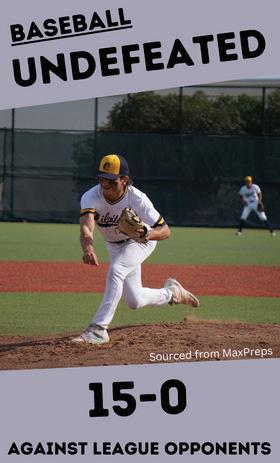
SPORTS THE UNION JUNE 2024 6
Keryssa Li brushes past her competitors at a cross country meet.
Courtesy of Malcolm Slaney
By Kevin Ting
Erick Johnson | THE UNION
Alex Dillon sets high bar as highly ranked high jumper in California
By Savan Bollu
As of May 23, junior Alex Dillon is ranked 13th state-wide for boys high school high jump and first in the Central Coast Sections (CCS) after achieving a new personal record of 6 feet 7 inches at the prestigious Arcadia Invitational on April 6, according to the Athletic Net website. He also placed fourth in men’s high jump at the invitational, according to the Arcadia Invitational website. More recently, Dillon also placed third at CCS Championships on May 18 with a 6 foot 2 inch jump.
Going into the Arcadia invitational, the goal was simply to gain exposure to a higher level of competition, with no expectations of placing, Dillon said. At the start of the season, his “realistic goal” was a jump height of 6 feet 5 inches, and his “unrealistic” goal was 6 feet 7 inches, he added.
“I’d never even tried 6-7 before that (the Arcadia Invitational), so it was a little odd, but I think it also gave me a little boost of confidence knowing that, going forward, those higher heights aren’t impossible to get,” Dillon said.
The Arcadia Invitational hosts the best athletes on the West Coast, if not the nation, assistant track coach Austin Nguyen said.
The invitational is a large Nike-sponsored event that attracts many college scouts, he added.
“The biggest thing this season for sure is, first of all, getting an opportunity to go to Arcadia,” Austin Nguyen said. “We were just happy to be there, but he ended up placing fourth in high jump as well, so a really, really, really big accomplishment there.”
Going into his final jump, Dillon was calm because he had already secured a spot in the top six, he said. Dillon deals with pressure before a jump by having a “clear
and positive mind,” he said.
“Sometimes, I’ll try to just clear my head from all that (pressure) and just try to think about it in a positive way, (and) just be like, ‘You don’t have to be stressed about it. It’s just you and the bar,’” Dillon said. “It’s not like basketball where you’re going to be going against a bunch of people that are better than you; you’re competing with yourself.”
Dillon missed prom and traveled to Los Angeles to attend the meet, he said.
“You especially don’t want to do bad if you’re all the way up here and missing something, so I think that was a good instance of being able to not feel as nervous and just (being) able to do my thing,” Dillon said.
Dillon has been on the MHS track and field team since his freshman year, and also used to play on the MHS basketball team, he said. He originally competed in the high jump, triple jump, and long jump, but ultimately decided to focus his efforts on high jump, he added.
“I always really liked jumping mainly, like dunking a basketball,” Dillon said. “My first time jumping my freshman year, I could kind of tell that that (high jump) was the event that I wanted to do.”
Dillon’s go-to technique for the high jump is the Fosbury flop, which consists of “going right over (the bar) like a fish,” he said. During school practices, he mostly focuses on developing his technique for his run-up; he also takes weekly private lessons, he added.
“Alex is a very quick learner,”
Austin Nguyen said. “When you explain something, it takes only a couple of reps before he starts figuring it out.”
Austin Nguyen has coached Dillon on the MHS team since
Dillon’s sophomore year, Austin Nguyen said. Dillon is a good communicator and a coachable athlete, he added.
“One of the first things I told him when I met him last year is that, if he hits 7 feet, that’s an automatic scholarship,” Austin Nguyen said. “I’m exaggerating a little bit, but he really took that to heart and decided to really focus in on getting better at high jump, and I really love that about him.”
As a teammate, Dillon is a light-hearted person who jokes around a lot, Austin Nguyen said. As for future goals, Austin Nguyen hopes that Dillon will continue developing his leadership skills on the team, and believes that Dillon may be able to break the school’s high jump record next year, he added.
“I think the ultimate goal is to hopefully beat the school record, (which) is 6-11. I think, if I were to work hard enough in the off-season, that would be doable,” Dillon said. “Beyond that, (my goal is) going to college for track.”
Dillon is also grateful to friends Sukhman Kang and Alfredo Lugo for their support during the track season, he said.
“They’re not part of (the) track (team) but they’re always like, ‘What did you jump? What did you do?’” Dillon said.
Senior Alex Nguyen, who is Dillon’s friend and a fellow high jumper at MHS, views Dillon’s successes as “unreal,” he said.
“It’s almost taken for granted because you see around California, his PR (personal record) and accomplishments (are) very rare,” Alex Nguyen said.
High jump is one of the most difficult sports, Alex Nguyen added.
“With high jump, I feel like there’s a threshold, a plateau you hit depending on how good you are,” Alex Nguyen said. “If you’re
not constantly working and practicing to get better, it’s very unlikely that you’ll compete and get far in it.”
Dillon’s strength is his persistence in trying to improve and his drive to get recruited to a college, Alex Nguyen said.
“He’s always been hard working; he’s been always pushing himself to get better,” Alex Nguyen said. “This might sound crazy, but he’s (a) generational talent because he’s breaking a lot of records. This has never been seen before, especially (in) a junior.”

Swimming team freestyles to CCS, looks forward to next year
By Agna Soneji
The swim team qualified for four events in the Central Coast Sections (CCS): the boys medley, the boys 4x1 relay, the one fly by sophomore Justin Li, and diving by freshman Misha Tinetti, head coach Kyler Van Swol said. Tinetti placed third at CCS and placed 13th at California Interscholastic Federation (CIF) states, and the 4x1 relay placed last at CCS, he said.
Although the qualified teams hadn’t placed very high in CCS, they were still excited to be there at all, senior swimmer Robert Salazar said. Only one team qualified for CCS last year, so having
four make it this year was an empowering moment, Salazar said.
“Our medley team, we found the Friday before that we made it (to CCS) so we were all jumping around,” Salazar said. “We didn’t think the 4x1 team made it until we found out on Monday, and when we found out, we all jumped in the pool.”
Losing the medley team event was a hard hit for the team, Salazar said. Their backstroker was charged with a false start which led to the whole team being disqualified, Salazar said.
“Our backstroker Nakul Warrier went in the water and he was getting ready,” Salazar said. “He was planting his feet and his foot
slipped. He was adjusting, and that’s when they said to set your mark, so to (the judges), it looked like he was false starting, but he was just readjusting himself.”
The team was sad to have taken a loss with the medley team, Van Swol said.
“I think our medley would have been our best relay team, but our best participant was our diver from the girls team,” Van Swol said. “She did fantastic. She took third at CCS, made CIF state and got thirteenth as a freshman.”
Although the whole team was very excited to make it to CCS, their results at CCS left room for improvement, senior Brendan Tam said.
“To really be good you have to be really dedicated to the sport, but I think that’s something that our team, our team culture, just hasn’t developed yet,” Tam said.
The team’s goal this year was to make it to CCS, and they reached that goal, Van Swol said. They have potential to place higher, but that requires a different mindset, he added.
“The energy of finals is a lot different than the energy of prelims,”
Van Swol said. “The way we approach it, it’s a lot different. If we were seeded in the top 16, I think our energy would be a lot different going into it with a much more competitive attitude.”
The team is still very optimis-
tic about their chances of placing higher in the next couple of years, Tam said.
“Our program’s still fairly new and still trying to develop like other schools that have been developing their programs for a while, but Milpitas should be coming up soon,” Tam said.
The team has put in several physical and monetary investments into training for CCS, Tam said. The team bought advanced suits out-of-pocket for each player, averaging around $300 per suit, he added.
“They’re hard workers; they put in the work and show up to practice and they are very driven,” Van Swol said.

SPORTS JUNE 2024 THE UNION 7
Dillon leaps over a high jump bar set at 6 feet 6 inches in the CCS Championships finals, which occured at Gilroy High School on May 18.
Courtesy of Austin Nguyen
Courtesy of Muskan Gupta
Sophomore Justin Li swims to the finish line during a swim meet at Independance High on May 3. Li also participated in the one fly competition at the Central Coast Sections contest.


Congratulations,






Asher Ames
Emily Banh
Caiden Bascos
Dylan Bradshaw
Rachael Cabral
Andre Chapin-Yang
Trisha Chung
Andrew Duong
Justin Fazon
Benson Foy
Esabel Garcia




Xiaoli He
Navleen Kaur Hothi
Ryan Huang
Ngan Irene Ho
Nancy Le
Terence Lee
Yejun Lim
Alexander Lu
Felix Luong
Dominique Luzon
Nena Jean Masangkay
Nathan Mendoza
Gabriel De Leon
Alezandra Meneses
Lleyton Mintu
Marc Jericho Molina
Nikunj More
Yubin Na
Melinda Nguyen
Ronny Nguyen
Johnny Palacios
Katherine Pekarek
Alan Phan
Fabrizio Rangel
Pranitha Govindarajulu Seshachalam
Harvind Singh
Mujtaba Syed
Corey Tang
Alexander Te
Jessica Torres
Brittany Tran
Landon Truong
Ethan Truong
Ethan Tsui
Anooj Vandalore
Brad Vo
Emmelie Wong
Ephraim Wong
Alex Young
Ivandrei de Leon


Giselle Argueta
Mikella Garcia
Harveen Kaur
Ritchell Lorezco
Aurelia Martinez
Stephany Torres Osborn Wang


Anaiah Smith
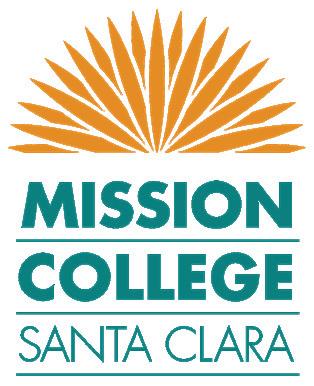
Ryan Allenegui
Josiah Billing
Venice Jilliane Blanco
Luis Buen
Catalin Doi
Timothy Duong
Tristan Finuliar
Desiree Flores
Tommy Hoang
Dean Inguito
Mo Koelle
Peter Le
Diego Lopez
Krizelle Lugtu
Lisa Lui
Kaitlen MacBay
Blanca Marquez
Jade Salazar Mendoza
Makaila Mirabal
Sharleen Monteagudo
Shamir Morley
Andrew Nguyen B.
Jeslyn Nguyen
Ruffa Nolasco
Gabriel Padilla
Afia Qureshi
Jaschiel Ross Via G. Rafanan
DianaFelyce Siaotong
Yuandan Tang
Jacklyn Thi
Angelo Vazquez
Tiffany Vu
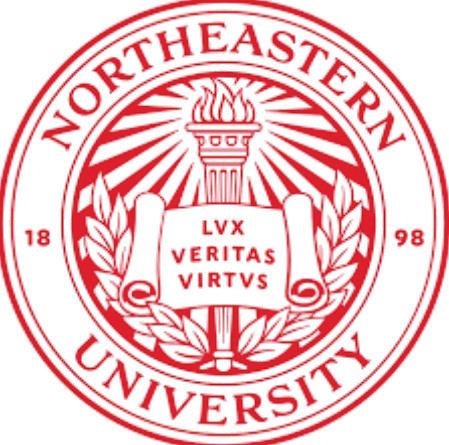






Demein Young
Aldrin
Penelope Mellado Garcia Mia Gonzalez Nirvon Kang Ezekiel Medina Aaliyah Onalfo Kayla Samonte
Seth Simran Jarron Temple Chris Lawrence Lacanlale Tordil
Faye Balquiedra Shannen Cabico
Galindez
Amira
Arjun Pai
Srishti Bhatnagar
Shaila Mirwani
Nhuhao Nguyen
Natalie Phan
Aguilar Grace Clements Monica Garnica Kailee Munoz Priyah Quinonez Francheska Santiago Vanessa Serrato James Michael Sherwin Ventura Anne Sungahid JUNE 2024 POST-GRADUATION PLANS THE UNION 8
Cristian
Yusuf Kothambawala
Neil
Azaria Garcia Tiffany Ng
Aaron Adao
Limpin Sruthi
Munaga
Zarif Reza
Rylee Carreon Emily Thai
Jordan Clayton
Kendra Helwig
Aeshia Patague
Hugo Ybarra
Elaine Lee Pranav Pingali
Brandon Chiang Muskan Gupta
Hailey Luong
Tyler Watts
Christian Martinez-Jimenez
Genevieve Ramirez
Sophia Nicole Malte Amigable
Shri Varun Ravuri
Rachel Plummer
Geneva Deng
Class of 2024!


Georgie Agustin
Olivia Simmons Antikoll
Raveena Bhela Michelle Castillo
Derek Castro Victoria Dao
Jervan Franco Alvaro Garcia Sue Ho
William Hu John Hy
Vihaan Khandelwal Ian Mao
Rj Matsuo
Jesus Ochoa Mendez
Arnav Nagre
Richie Ngo
Wayne Ngo
Don Nguyen
Jeff Nguyen
An Nguyen
Hannah Nguyen
Noah Pasion-Malanum
Supreeti Patra
Ngocphuong Pham
Sydney Phantoms
Anuj Rajesh
Danielle Ramos
Matthew Samson
Ashley Simmons
Akshaj Srivastava Kristina Tran
Nga Tran
Jaden Quan Tran
Someswar Vinayagam
Thomas Woneis
Jiasheng Wu
Sonia Zeng
Xingjie Zhao




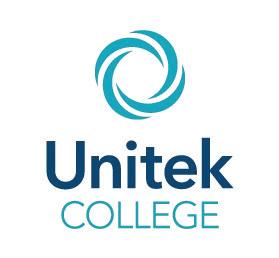

Felicia Banulescu
Brandon Chen
Isabelle Cho
Jaina Gandhi Satvika Iyer
Isaac Jones Om Kannan
Arnav Khinvasara
Vanessa Lam
Sukhad Mutatkar
Tvisha Nepani
Son Nguyen
Ariel Shen
Roman Silivra
Sawan Srivastava
Natasha Tiwari













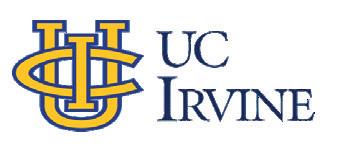
Rianna






POST-GRADUATION PLANS JUNE 2024 THE UNION 9
Gemma Dinh
Miloni Dharod Mai-Phuong Hoang Esther Liu
Sneha Nair
Kayla Sung
Andre Nguyen Siena Yuan Farhan Ali Maira Aslam
Summer Elacion
Samuel Graham Bharath Kamal Kavitha
Ramos
Swarna Kona Cicely
Savan
Isaac Tin-Long Chan Mallika Ghante Maryam Mohamed Sydney Moon Kathy Nguyen Mary Nguyen Om Phadke Gabriel Su Izzy Yoeu
Prisha Bali
Bollu
Clare Vo Christian Ace Lorenzo Angela Paguio Gayle Ubay
Kianna Belen
Riya Navani
Kevin Ting
Sidhant Burela
Jasmine Liu
Blytes Canlas
Yvonne Ko
Jonamae Keilani Guanzon Radoc Therese Sanchez
Andy Huang Davin Jeng
Vincent Nguyen
Andrew Ton
Lauren Nguyen Emmi Wong
Jasleen Dhaliwal
Megan Zamora
Aquino Annna Blanco Pranavi Dasari
Fisher
Hsieh
Khuu
Lam
Liang
Nguyen
Nguyen
Nguyen
Nguyen Yunha Park
Thomas Lam Tran
Vu Ava Woodhams Muhammad Ali Priyanka Ganguly Alexander Tjandra Alina Tran Matthew Vu
Hoang Nguyen Nguyen
Justin
Gianna
Rachel
Duong
Benjamin
Felix
Matthew
Valerie
Alexander
Kaitlyn
Jenny Pham Christina
Kim
Hegde Jessica Kwan
Deepthi
Mallorca Sabrina Nguyen
Do Kaylee Gamelon Erick Johnson Zubia Mohammed Aman Nindra Juan Rios Kavinkumar Sainathan Nathanael James Sanvi Parvatikar Vanessa Pham Agna Soneji Ashika Subramanian Lance Young
Brandon
Mingyu Sun
Brooke Vogel
Kenneth Lu
Kalyn Agleham
Disclaimer: This data was collected using a survey of self-reported data and consequently may not be accurate. The data does not contain the entire senior class.
Jennifer Shum
Paarth Gupta Ayan Kanth

TXT’s ‘Minisode 3: TOMORROW’ moves listeners through emotional depth, vocals
By Tiffany Ng
“Minisode 3: TOMORROW,” Tomorrow X Together (TXT)’s newest album, includes a total of seven songs that are upbeat, emotional, and overall fun to listen to. The songs discuss topics like adolescence and the conflicting feelings a person may experience while overcoming a distance between them and their partner. Additionally, the members in this group – Soobin, Yeonjun, Beomgyu, Taehyun, and Huening Kai – each do a great job showcasing their singing abilities in each song.
The first track, titled “I’ll See You There Tomorrow,” is a catchy song with lyrics describing the loyalty that someone feels for their partner, as well as the hope that they will see each other again after they are separated. In the first few seconds, Soobin and Taehyun sing in a low voice with the instrumental building up in the background, an effective hook that made me want to listen more. In the chorus, the repetition of the lyrics, “There’ll be no more sorrow, I’ll see you there tomorrow,” combined with the upbeat instrumentals add to the addictive nature of the song.
The third track, titled “Deja Vu,” is another song describing someone’s devotion toward their lover. The lyrics describe desperation, as well as a person’s promise to keep their partner happy and never let them go. Accompanying the lyrics are powerful vocals and an upbeat instrumental, which I found myself enjoying after a few listens. This song is considered the “title track,” as it
is the only song in the album that has a music video, and one of the songs that has a choreography that the group frequently performs when they promote the album. The music video contains an extensive amount of visual effects and even does a great job of portraying the lyrics. In one scene, Yeonjun runs through a field before falling on his knees and putting his hands into a praying position, a gesture meant to show desperation. He kneels with a sad and almost teary-eyed expression on his face, portraying true despair and the hope to relive old memories. Needless to say, this song and its music video are absolutely breathtaking.
Another noteworthy track is “Quarter Life,” sung by three of the members: Beomgyu, Taehyun, and Huening Kai. This song describes a “quarter-life crisis,” in which someone feels lost while trying to navigate adulthood. The catchy, upbeat rock instrumental makes the song all the more enjoyable to listen to. Furthermore, the vocals sung with genuine passion combined with the profound lyrics describing the hope to get out of a “dark tunnel” add an emotional aspect. For this reason, this song is my personal favorite from the album.
Overall, I really enjoyed this album. Each song is thoroughly pleasant to listen to, despite the fact that they could be longer. The songs show the charm in each member’s singing ability, which could potentially attract more fans to the group. I would highly recommend listening to this album.
Nasheeds communicate Islamic values through spiritual music
By Maryam Mohamed
Nasheeds are cherished and listened to in weddings, family get-togethers, and other special events around the world—but what exactly are they?
In essence, nasheeds are songs with Islamic messages. Across the world, Muslims enjoy listening to them throughout their day-to-day activities and on special occasions. Some nasheeds, like those composed by Yusuf Islam, are educational, teaching young Muslims with different native languages how to remember and pronounce the Arabic alphabet. Others help children and adults alike understand the basics of their religion, improve their character and conduct, and be motivated to improve their relationship with God.
passed away in 2022.

Many nasheeds are produced with vocals alone, but some include a combi nation of instrumentals that add a mu sical flair. The main instrument used in modern and traditional nasheeds is the “duff”, a type of percussion similar to the drums.
Nasheeds come in a wide variety of languages, but the most widespread and famous nasheeds are in Arabic, English, Urdu, Punjabi, and Farsi. They also come in a wide variety of forms. Some nasheed artists perform solo and others, like Deen Squad and Native Deen, produce nasheeds as a group. The word “deen” in both group’s names means “religion” in Arabic.
As a young child, all my car rides to and from elementary school were beautified with nasheeds. Listening to Maher Zain, Sami Yusuf, and Mu hammad Tariq sing nasheeds about respecting and honoring mothers, making “du’a” (supplications to God) for newlywed couples’ mar riage, and looking beyond this “dunya” (life here) towards the “akhira” (afterlife) was a forma tive experience for my siblings and me.
As I got older, I found the calmer nasheeds about tragedy and per severance to be inspiring amidst a world of chaos and anxiety. Na sheeds like “Rahmatun Lil’Ala meen” by Maher Zain are beautiful and poignant; the title translates to “Mercy to the Worlds,” one of the ti tles given to the Prophet Muhammad, and the nasheed itself is in memory of Maher Zain’s father, Mustafa Zain, who
Bollywood music, movies join in harmonious relationship
By Tanisha Varma
In India, the equivalent of our favorite albums and artists are blockbuster movies that produce memorable and iconic soundtracks for the stories they tell. Since the beginning of the industry, Bollywood music has closely been linked with the movies that it appears in. Instead of releasing music through cohesive albums as many other industries do, artists produce songs for specific movies, enhanced by lavish music videos from the films and the actors that appear in them.
Most importantly, Bollywood music serves as a supplement to the storytelling process. A majority of Bollywood
films are considered musicals by Western standards, with frequent interruptions by musical ballads to evoke feelings of romance, energy, suspense, and tragedy. When viewers go back to watch such musical moments in the films, they are reminded of the storyline and return to the movie to experience it once again. Not only does Bollywood music facilitate storytelling, but it also garners marketing publicity for the films they are a part of. Oftentimes, songs are released before the actual movie, creating an image for the film and intriguing audiences, encouraging them to go see what it is about. The music videos contain vibrant colors, energetic choreog-
raphy, and catchy choruses that create a buzz before the movie’s release.
One iconic movie that demonstrates the close tie the Bollywood industry has with music is “Om Shanti Om,” re leased in 2007. Throughout the entire film, a theme tune is played at dramatic moments. This same snippet of music is played in almost all of the songs on the soundtrack, with several variations of instruments and lyrics; however, the tune remains the same. “Om Shanti Om” is a prime example of how songs are created for Bollywood movies, and how entire soundtracks are attached to the films they’re in.
Considering the beautiful messages in nasheeds, it is surprising how some people paint the Muslim community; in my case, a quick search related to nasheeds leads me to multiple articles warning against these “extremist” songs that the civilized world needs to watch out for. For example, one article titled “Musical Criminology: A Comparative Analysis of Jihadist Nasheeds and Narco Corridos” compares nasheeds to drug ballads, songs that are composed and sung by drug cartels. The way nasheeds are evaluated seems to represent how Muslims themselves are stereotypically evaluated—guilty until proven innocent.
All in all, nasheeds are a significant part of the Muslim cultures around the world, whether it’s in Malaysia, Ethi-

Due to the combined music and film industry, with a cultural emphasis on

film, the government didnt pay attention to the music industry in India in terms of copyright and licensing laws that benefit singers, composers, and producers. According to Splice’s “The History and Evolution of Bollywood Music,” India’s recorded music industry generated “just U.S. $0.09 per capita in trade revenues in 2016, making it the most poorly monetized music market currently being tracked.”
Furthermore, despite the important role songs play in Bollywood movies, playback singers (singers who record songs for actors to lip-sync to) are not sufficiently rewarded for their work. According to an interview by the Indian Express with playback singer Armaan Malik, oftentimes singers do not get paid to sing in movie songs and are often replaced by other artists if the songs are not “sung well.” Instead of being compensated for the work that takes place in the studio, Bollywood playback singers are expected to earn their pay through live shows and the standard wage paid if their version of the song is selected to be in a movie. Overall, Bollywood music is the heart of the movie industry. Although practices are sometimes unfair to those who create the music, music has a symbiotic relationship with movies: both need the other to garner maximum success.
JUNE 2024 SPREAD THE UNION 10
courtesy of t-series
Characters Shanti Priya (Deepika Padukone) and Om Kapoor (Shah Rukh Khan) dance to an original song made for the “Om Shanti Om” movie.
courtesy of bighit music
The TXT members pose for their comeback showcase to promote their newly released album.
Student voice: How foreign music helped me learn, appreciate Chinese as an Indian
By Savan Bollu
At the start of high school, I never imagined that I would perform a song in Mandarin in front of a large audience—but there I was, preparing to sing, standing on the makeshift stage of Chinese Club’s downsized Lunar Show at the San Jose City College (SJCC) extension.
A few weeks earlier, my Chinese 3 teacher, Ms. Tao, had announced to our class that Chinese Club was looking for performers for its Lunar Show. Although the thought of performing at the Lunar Show as an Indian and without any singing experience was daunting, I decided to sign up to perform with my friend, eager to put my Chinese-speaking–and singing–skills to the test.
With Ms. Tao’s help, I settled on the song “Dì Yī Cì Ài De Rén” by Cyndi
lyrics.
When the day came, I took to the stage and sang. I wish I could say I sang flawlessly, but I didn’t. My voice cracked on a high note and someone snorted at my ad-libs. As an Indian performing a song in Mandarin in front of an audience of mostly native Chinese speakers, I felt like an outsider--but afterward, people commended my pronunciation and bravery for performing. My bond with my teacher, who sat in the front row and mouthed the words to the song to guide me, only grew.
Embarking on this journey of learning and performing a foreign song was a transformative experience that helped me step out of my comfort zone and engage in a beautiful moment of cross-cultural interaction. In the hours I listened to the song before my performance, my ears began to detect subtle nuances in pronunciation that I came to realize make or break pronunciation in Mandarin. I also started to better appreciate the range of sounds and beauty of the Chinese language, and I became more motivated to continue learning it. In addition, I learned more about Chinese

pop and culture through the song and its themes discussing love.
Studying a song in Mandarin also supplemented my learning in class; I not only built more confidence in my pronunciation, but also learned new phrases and gained a better understanding of grammar and sentence structure, with the song acting as an unexpected mnemonic device.
Foreign songs have long been considered an effective tool to supplement language learning, as they train students’ brains in how to auditorily process a language, and their repetitive and catchy nature allows students to better remember vocabulary and my experience was a testament to that. However, I also found foreign music as a way to explore other cultures and bond with people from other cultures through a shared appreciation of music. So, the next time you have to recite a nursery rhyme or karaoke in your foreign language class, embrace it and consider it an opportunity to better immerse yourself in the language.
Vietnamese pop presents noteworthy vocals, songs
By Ruby Bui
As a girl who loved singing Vietnamese karaoke as a toddler, I feel that I’ve grown more disconnected from my roots as I became more assimilated with American culture and music. Vietnamese music, just like music in other cultures, is versatile and can be enjoyed by people of all ethnic groups. Thus, I took the opportunity to explore more music from my culture and test my Vietnamese fluency, and I searched for Vietnamese pop playlists on Spotify.

“Ghen” by MIN, ERIK, and Khac Hung - 6/10


Released on Jan. 10, “Ghen,” meaning “jealous,” is a catchy song about jealousy and love sung in mostly Vietnamese with bits of English. My favorite aspect of this song undoubtedly is hearing MIN’s amazing voice that is both soothing and captivating. Although I listened to her previously trending song “Cà Phê” before, hearing her voice in “Ghen” impressed me as if it was the first time I had heard her voice. However, I felt that the beat was too upbeat and didn’t mesh well with the melodic parts of the song. Additionally, the chorus, which tends to be the best part of a song, was my least favorite aspect of “Ghen.” The chorus felt repetitive and gave me the impression that the songwriters tried to make it sound catchy, but failed to execute it well.
“CHAY NGAY ĐI - Onionn Remix” by Son Tùng M-TP and Onionn 8/10

Latin American music contains variety of genres, attunes diverse verses to culture
European colonization, when the Spanish and Portuguese effectively used music to Christianize the natives, according to the Encyclopedia Britannica. Europeans built massive churches across the American continent in cities that would eventually become nations’ capitals and major cities. It was at these cathedrals that Europeans would use song and music to convert the Natives and enslaved Africans to Christianity. Because many cultures in the Americas already included musical elements as a big part of religion, this method was particularly effective.
Slowly, Europeans introduced opera, concert halls, and national music institutions that helped music develop across the continent. After the independence movements across Latin America, each region developed its own culture. Many countries such as Brazil, Argentina, and Mexico found pride in their own national musical identities.
Listed below are seven of the most famous genres of music from every corner of the Americas, and a song recommen-
dation to introduce you to the genre: SALSA: Originating in the Caribbean and New York, Salsa is an upbeat and groovy genre that distinctively uses a beat called a “clave,” two wooden instruments used to create a rhythmic pattern. It emerged in the 40s and 50s and was popularized by artists such as Tito Puente and Celia Cruz. Song: “Ale Ale” by Marc Anthony MERENGUE: From the Dominican Republic, this upbeat genre commonly uses an accordion, a hand drum, and a metal tube called a “charrasca.” It was shunned by the nation’s elite class until Rafael Leonidas Trujillo rose to power and promoted the genre, making it a part of the country’s national pride. Song: “Tiburon” by Proyecto Uno RANCHERA: A staple of Mexican music, this genre relies heavily on stringed instruments such as the guitar, violin and accordion. It emerged as an element of national pride after the Mexican Revolution and was promoted by the federal government through popular movies and television to give Mexicans a unified identity after the war. Composer Jose Alfredo Jimenez and singer Vicente Fernandez are hailed as icons of the genre. Song: “El Rey” by Vicente Fernández CUMBIA: This Colombian genre of music dates back to the colonial era, when enslaved Africans would play
simple rhythms for the other slaves. Later, European elites would incorporate more instruments and popularize the genre. Despite its tragic origins, cumbia originated as a courtship ritual and commonly talks about love and the celebration of life. Song: “Como Te Voy A Olvidar” by Los Angeles Azules
BOSSA NOVA: From Brazil, this genre is a jazzy style of music with soft, romantic vocals and classical guitar tones. It stems from the Afro-Brazilian Samba, an upbeat Brazilian carnival genre. Bossa Nova entered Brazilian culture in the 1960s and quickly became a staple. Song: “The Girl from Ipanema” by Stan Getz
TANGO: Traced back to Argentina and Uruguay, this genre of music is played with an accordion called a “bandoneon.” Its lyrics can be philosophical and profound, but the music can also be strictly instrumental. It was originally played in ballroom dances until Argentine composer Carlos Gardel popularized the genre. Song: “Por Una Cabeza” by Carlos Gardel REGGAETON: From Central America, the genre is characterized by loud drums and a repeating beat. In the 1980s, musicians began recording Spanish versions of reggae songs and soon after, artists began making their own songs combining reggae with hip-hop. In the 21st century, the genre gained popularity across the world. Song: “Gasolina” by Daddy Yankee
This song is undoubtedly one of my favorites from this list, and there is hardly anything to critique about it. The beat is catchy, which is this song’s strongest aspect. Another commendable detail about “CHAY NGAY ĐI - Onionn Remix” is that, unlike some songs, the lyrics have variety and are not repetitive. However, since I am only familiar with the southern Vietnamese accent and dialect, it was difficult for me to understand the lyrics and their meanings as this song was sung with northern Vietnamese dialect. Despite my lack of fluency, I was still able to enjoy the song as much as I would have if I were to fully understand it.
“Gói Tình Em Roi Ve” by Phùng Khánh Linh - 6.5/10
Some parts of this song were pleasant and flowed nicely, strongly demonstrating Linh’s strong vocals. There is no denying that she has an impressive voice and vocal range, but the song’s major weak point is the melody.

During the majority of “Gói Tình Em Roi Ve,” the melody often sounded awkward as many of Linh’s verses follow a down-down-up pattern in the tone. This song overall is not something I would have chosen to listen to on my own, but I am glad to have discovered it nonetheless.
“This Way” by CARA - 8.5/10 Since “This Way” had over four million streams on Spotify, I had to give it a listen. This song didn’t disappoint, with CARA’s melodious voice perfectly matching the song’s light and playful style. Her lyrics are sweet and fun, talking about not being able to get someone off her mind. Despite being my favorite song on the list, it still wasn’t perfect: my least favorite part of this song was its break where it includes a “roses are red, violets are blue” cliche in the lyrics, which threw me off and sounded too awkward. I would have preferred if CARA sang all the way through the song, leaving out the break in return.
SPREAD JUNE 2024 THE UNION 11
Scan for the playlist!
'The Tortured Poets Department' tortures listeners with repetitive, skippable songs



 By Sanvi Parvatikar
By Sanvi Parvatikar
“The Tortured Poets Department,” released on April 20, 2024, is Taylor Swift’s latest endeavor, a sprawling 31-track voyage focused on her feelings amidst the height of her fame. Many tracks were reminiscent of dull retail-store music, and it’s clear that this album was made for Swift’s dedicated fans. Each track contributes to a passably cohesive narrative and reads as a memoir, with “Manuscript,” the final song, confirming this idea. Initially, I was skeptical. ‘Midnights’ was mediocre, and I feared this new release might be equally or even more disappointing. While a few tracks did catch my interest, overall I found the album somewhat lacking.
While tracks like “Guilty as Sin?” and “Who’s Afraid of Little Old Me?” stand out with their poignant lyricism, others blend into each other, lacking substance. One of my main issues with this album was the length; I wouldn’t recommend listening to the album in one sitting. It was hard to appreciate individual songs, and only a few songs truly stuck with me. The constant, near-random harmonies did nothing to highlight Swift’s voice. Few songs truly
challenged her vocal ability, which isn’t necessarily an issue, but listening to similar melodies gets tiring. At times, the songs would be bland to the point of the listeners’ exhaustion, such as “The Smallest Man Who Ever Lived,” and “Robin.”
Swift collaborated with Post Malone for her opening song “Fortnight,” and with Florence & The Machine for a song called “Florida!!!” While I found the former to be a subpar classic Taylor Swift song, “Florida!!!” truly shines for its refreshingly optimistic tunes amidst the somewhat depressing rest of the album.
In an ironic twist, the song I hated the most was “I Hate It Here.”
Swift sings about wishing to be in the 1830s, “I'd say the 1830s but without all the racists and getting married off for the highest bid.”
In context, Taylor speaks about playing a game with her friends where they would pick a decade to live in instead of the current one.
The 1830s were the worst period for African-Americans, and Swift addresses the issue by saying “removing the racists” and framing the issue of the 1830s to be misogyny. This isn’t poetry. This is a white woman redirecting the attention to white woman issues, and is, quite frankly, appalling.
When I first listened to this song, before those lyrics, I thought the
song was about her escapist tendencies, a need to go back to her childhood. I even liked the lyrics, “I hate it here so I will go to the secret gardens in my mind.” But the focus of her song now has become the 1830s line, and for that reason, I think Swift should have removed those lyrics.
Throughout the album, Swift’s uninspired descriptors of romance become fatigue-inducing, making the ending songs far more compelling because of their focus on other aspects of life such as betrayal, and regret. The song “thanK you aIMee,” a clear callout to the artist’s feud with another celebrity, also touches on the feeling of being bullied and hurt by another person, reminscent of an older, bitter version of Swift’s previous song “Mean.” Some other gems in the album include “Cassandra” and “The Prophecy.”
In “Cassandra,” Swift’s voice is accompanied by piano, and I found it to be one of the few songs where the audio track doesn’t overpower her voice. The song alludes to Cassandra, a Greek seer who was cursed for her prophecies to be ignored. I found the lyric “when the truth comes out, it's quiet” to be particularly touching.
Overall, I found the songs in this album to be hit-or-miss. Many tracks were skip-worthy, with a few rare standouts.
Pearl Jam's 'Dark Matter' infuses listeners with energy, excitement
RATING: 3.5 out of 5



 By Tanisha Varma
By Tanisha Varma
“Dark Matter,” released on April 19, is American rock band Pearl Jam’s 12th album and contains 11 tracks. The lead singer is Eddie Vedder, lead guitarist is Mike McCreedy, Jeff Ament is bass guitar, Stone Gossard is rhythm guitar, and Matt Cameron is drums. Since their first album in 1991, Pearl Jam has garnered a large, international fan base and has remained a prominent band in the rock world for several decades, while also utilizing their music for social activism.
This album is the band’s newest album since “Gigaton,” released in 2020, which was an attempt at “artistic rejuvenation” for the band, according to a Pitchfork article. As someone who does not typically listen to rock music, the album was a good introduction to the genre that allowed me to grasp the different styles and musical sounds of rock. The album kicks off with two extremely energetic tracks, “Scared of Fear” and “React, Respond.”
and started feeling repetitive, especially with the constant loud sounds (drums, guitar) which, granted, are a main characteristic of the rock genre.
My favorites off the album include “Wreckage” and “Won’t Tell” due to their more mellow and slow style compared to the extremely energetic aforementioned tracks. “Wreckage” features a beautifully executed guitar riff that stays consistent throughout the song and evokes positivity and a very ‘main- character’ feeling when listening to it. The message of the song perfectly aligns with the music, as it's about letting go and realizing that life moves on.

“Won’t Tell” has an emotional sound and is a vulnerable track, as seen by the lyrics and the sounds of the minor chords. For instance, it repeats the phrase, “Can you heal?,” referencing the narrator opening up to a lover and his emotional transformation. It is perfect to listen to while on a night drive or simply reflecting while simultaneously jamming out.
The lyrics of “Scared of Fear” have an apparent theme of nonconformity and existing without apology, something that pairs perfectly with the rebellious and almost manic sound of the song. At first listen, it reminded me of the typical rock and roll archetype with prominent guitar sounds and upbeat tunes, which I think was a good way to begin the album. “React, Respond” has a similar, energetic rock sound, and its message contrasts the theme of rejecting fear seen in the previous song. This song preaches the idea of allowing yourself to be afraid in order to gain full control. Although the lyrics hold interesting meanings, I thought the first and second songs blended together
Some common things across most of the tracks are impressive guitar solos and riffs, something I admire about this genre. Even if you are not familiar with the rock genre like me, everyone can use the energy of the powerful solos and riffs for a boost of excitement. One such track that does this well is “Running,” which captures the feeling of extreme anger and frustration.
Overall, this album was a great listen for a rock-rookie and captured a wide spectrum of emotions over the span of the 11 songs. I will be returning to this album as most of the songs were encouraging and meaningful. Although the hard rock may not be for me, the other, slower songs are catchy and are tracks that everyone can enjoy.
'The Fall Guy' stumbles with mediocre story, redeemed by on-screen chemistry
RATING: 3.5 out of 5



 By Dhara Mehta
By Dhara Mehta
I went into “The Fall Guy” ex pecting a cliche action-comedy with tropes like spy-versusspy, helpless woman, and sav ior spy. However, unlike many action-comedies that have come out recently, “The Fall Guy, ” which hit theaters on May 3, provides a fresh new story with a gripping plot and sensational actors.
After surviving a near career-ending stunt, stuntman Colt Seavers (Ryan Gosling) is brought back to the film industry by movie producer Gail Meyer (Hannah Waddingham).
Seavers is a stuntman for a huge actor, Tom Ryder (Aaron-Taylor Johsnon), who has been missing and Meyer wants Seavers to find him. Meyer is able to convince Seavers to find Ryder because the director of the movie starring Ryder is his ex-girlfriend, Jody Moreno (Emily Blunt), so Seavers agrees because he believes it will help him and Moreno get back to gether.
Not only was the plot of the movie extremely original, but the star-studded cast was able
to add nuance and depth to the movie. Gosling’s charm and charisma never disappoints, and in “vintage.” Although the style suits Gosling and Blunt’s characters,
the vintage look has been done one too many times, losing the
they used to be: a way to escape from reality and enjoy what is on the screen.
Even though the movie was able to grip audiences, some parts of the movie felt slow and took a long time to build up, and sometimes the buildup felt anticlimactic, especially as the villain of the movie was revealed. The
villain was predictable and the twist to reveal who it was felt as if it had come out of a Disney movie. Plus, the villain is pretty obvious as the movie goes on, ruining the
My favorite aspect of the movie was the soundtrack. Songs from huge bands like Kiss, Mötleylor Swift, Christina Aguilera are featured throughout the film andsary atmosphere to each scene, whether it be -
If you want to laugh and enjoy a-

er
ENTERTAINMENT THE UNION 12 JUNE 2024
charm it used to have when retro
meaning, but this movie’s main focus was to make movies what
RATING: 2.5 out
5
of
Taylor Swift wears the same tattoos as Post Malone, who is featured in the album's song "Fortnight."
Courtesy of Republic Records
Courtesy of Universal Pictures
Courtesy of Monkey Wrench Records
Imaginarium brightens day with stunning nighttime lights, performances



 By Maryam Mohamed
By Maryam Mohamed
The Imaginarium was an event beaming with lights, and from March 12 to May 27 it was located just outside Marshall in the Great Mall’s parking lot. From 6:30 p.m. until it was pitch dark outside at 11:00 p.m., a plaza of glowing fairy tale characters, exciting circus shows, lavish photo boxes, unsettling, hazy green lasers, brightly colored fish on a wall, and neon punching bags captured my full attention. I felt like a kid again.
One of the first displays I came across was a stunning room filled with hanging bulbs of flashing lights. With mirrors for walls, the room is one, big, bright illusion; it was magical and disorienting. Some of the light bulbs went out, but I only noticed it after my vision adjusted and I was purposefully looking for something to scrutinize. Regardless, the infinite reflections of the mirrors drew attention away from the flaws, creating a truly immersive experience.
In stark contrast, one of the last displays was a dark, eerie, genuinely creepy room with the exit draped in a thick black cloth. With absolutely no light coming into the room, the green lasers shrouded in hazy mist looked straight out of a spy movie.

Before that, my friend and I thoroughly enjoyed watching the Imaginarium’s entertaining and exhilarating circus show. The show consisted of a hula hoop performance, a gymnastic display with curtains, a clown performance, and a dangerous knife throw. The gymnastic performance was absolutely mesmerizing, but the knife throw is what
Streaming services begin staggering releases, leave viewers unsatisfied
By Sidhant Burela
As I found myself nearing the end of the fourth episode of the second season of Amazon Prime’s “Invincible,” I was eager to watch the next episode. However, when I checked back the next week, the episode was nowhere to be found; instead, I learned that the show would be taking a four-month hiatus. In the age where instant gratification is at an all-time high and consumers want episodes immediately, why are TV shows and streaming services staggering their release schedules?

from episode-specific plots to more of an overarching plotline throughout the season, keeping audiences engaged and keeping subscriber retention rate high has been the priority of streaming services. However, this method still inconveniences viewers, as many end up uninterested in the show after it finally returns from its break.
really shot up the adrenaline and, arguably, blood pressure of the crowd.
Without explaining the rules of the game, the clown asked for volunteers from the crowd to come on stage and participate in the next performance. My friend and I were sitting in the front row, but after looking away from us and de-
From
with
Staggered releases are defined as periodically releasing epi sodes and taking breaks within a season, as opposed to releasing episodes all at one time. According to The Economic Times, “Invin cible” producer Robert Kirkman cited building suspense and allowing viewers to completely understand crucial events as reasons for halting the show's usual release schedule. This strategy is not an unusual occurrence, as in the past, many other popular shows such as “West world” and “Better Call Saul” have used the same method.

For a long time, Netflix has been credited with pioneering the “binge” form of TV consumption, often releasing many episodes or a whole season of a show at a time, according to The Ringer. Even Netflix is switching some of its shows to a staggered schedule, with the most popular example being “Stranger Things,” which split its fourth season into two volumes.
Netflix’s change of tactics in producing content represents an overall trend in the competition between streaming services. With so many streaming platforms fighting for viewership, it makes sense that each service would want its viewers to keep coming back for more.

For a long time, “binge watching" has been the most popular form of consum ing television shows, in which a viewer watches multiple episodes or even seasons of a show at a time. However, according to the article “2021 Was the Year Binge-Watching Took a Back Seat to Weekly TV” by The Ringer, the shift to the weekly stagger has been largely due to the goal of keeping viewer retention rates high. As shows have shifted more
The shift towards periodic episode releases represents a fundamental change in the way that we consume entertainment. During COVID-19, many of us binge-watched our favorite shows, and have now become accustomed to being able to do so. However, companies are evolving, and staggered weekly releases are just one of the many new ways they have begun to encourage viewers to continue paying for their services. As it stands, staggered releases seem to be the pathway on which television is heading, so sit back, relax, and watch your favorite shows unfold one episode at a time.
termining there weren’t any enthusiastic volunteers, the clown came down and convinced a poor man to go up the stage.
The performers proceeded to handcuff the man to a slightly raised board, put a bag over his face so he wouldn’t see what was happening, and pretend to throw knives at him from a distance.
In his mind, a clumsy clown was about to throw knives above his head, between his arms and body, and between his legs. In reality, they just told the crowd to cheer while coming close to the board and stabbing in those places—but he thought they actually did it. I talked to him afterwards, and all they told him was that they were professionals.
My friend and I were in astonishment, laughing out of shock and looking at each other in bewilderment. The man looked terrified—anyone would have been. While the circus show was amazing, I have to dock a point for this incident.
All in all, something that stood out to me throughout the event was the diversity of people enjoying the Imaginarium; there were parents, kids, teenagers, young adults, and seniors. The Imaginarium’s shine and dazzle might make someone think that it’s little more than an amusement park for hyperactive toddlers, but that’s far from the truth. While the event was mostly kid-friendly, it wasn’t kid-centered.
The Imaginarium was a beautiful and memorable experience. The displays of more than five million lights were stunning, and nearly all the exhibitions were enjoyable for just $21 for general admission—if you have the right company and a few hours to spare, I would recommend attending a similar event.
Pop to EDM: California booms
must-see summer music festivals
 By Dhara Mehta
By Dhara Mehta
Although large festivals like Coachella and Stagecoach have already ended, there are still plenty of music festivals to look forward to this summer and later on. As a senior, I know that I want to enjoy my last few months in California, so here are the music festivals and concerts I would recommend from most to least!
Hosted in our very own San Francisco, Outside Lands is a three-day festival (Aug. 9-11) that hosts artists like Tyler, the Creator; KAYTRANADA; Jungle; and so many more DJs, singers, and composers. Upcoming pop star Chappell Roan will be performing, as well as more alternative artists like Slowdive, TV Girl, The Japanese House, and more. Grammy winner Killer Mike will also be performing at this festival, so even if you are not into alternative, indie, or pop, there are so many different types of artists performing all kinds of genres of music, making this festival accessible to everyone no matter the genre of music you like.
Martin
Garrix, a producer/DJ
you may recognize from songs like “Animals,” “In the Name of Love,” “Scared to be Lonely,” and “Summer Days” will be performing at the Bill Graham Civic Auditorium (in San Francisco) on June 15. This auditorium will also host singers and bands like Jacob Collier, Cage the Elephant, Tate McRae, Dom Dolla, and others throughout the rest of the summer.
One of the most iconic LGBTQ+ singers, girl in red, will be performing with The Beaches at the Warfield in San Francisco on June 2. The Warfield is one of the most gorgeous venues in San Francisco, designed as if it was a theater from the 1900s, so attending at least one concert here is a must! Ken Carson will also be performing at the Warfield on July 24, as a part of his Chaos Tour.
One of the biggest electronic dance music (EDM) festivals in California is hosting a smaller branch at The Gorge in the state of Washington, on June 22 and June 23. Artists like Disco Lines, Dabin, Zedd, Troyboi, and more DJs and producers will be performing at this two-day festival. This event, however, is only open to people 18
or older.
For fans of soul music and R&B, legends like Lionel Richie, Chaka Khan, Thee Sacred Souls, Kool and the Gang, and more will be performing at a one-day festival called Fool in Love in Inglewood, Calif. on Aug. 31. The event is open to all ages, and you can bring your younger siblings and friends with you, and even your grandparents that want to relive their glory days.
As Latin music continues to grow in popularity nationwide, BottleRock (festival organizer) presents La Onda in Napa Valley from June 1 to June 2. La Onda is a two-day festival open to people of all ages. Some popular Latin singers like Farruko, Maná, and Junior H will be performing, alongside more than twenty other artists. It will be hosted at Napa Valley Expo, a large outdoor venue perfect for large music festivals like La Onda. The world doesn’t start and end at Coachella. Every year, there are large music festivals and concerts like these across the country and the world—all you have to do is look!
ENTERTAINMENT THE UNION JUNE 2024 13
RATING: 4 out of 5
The Imaginarium features a larger-than-life, glowing princess surrounded by colorful flowers and leaves.
Maryam Mohamed | THE UNION
Outside Lands will be held from August 9 to 11, featuring artists such as Tyler, the Creator and Jungle.
Courtesy of Outside Lands

ADVERTISEMENT THE UNION 14 JUNE 2024

ADVERTISEMENT THE UNION JUNE 2024 15
Sports betting shoots through roof
By Kevin Ting
Just six years ago, sports betting was considered illegal under United States federal law, until the Supreme Court legalized the practice after the landmark court case of Murphy v. NCAA. Now, it has become one of the fastest-growing gambling industries, with 29 states allowing online sports betting. In fact, according to National Public Radio (npr. org), Americans bet $120 billion on sports in 2023, a 28% increase from the previous year.
This growth has been, no doubt, driven by the multitude of advertisements and celebrity endorsements or brands on online sports betting websites. Numerous celebrities and internet personalities have been sponsored by such sites, thus endorsing these habits to their audiences, which has led to a widespread presence of these sites on numerous social media platforms.

mainstream appeal of these platforms have made gambling more enticing for younger audiences. However, there is a clear, underlying issue here: the drastic rise of illegal, underage gamblers. The sheer accessibility of these sites has caused an unprecedented surge in underage gamblers, according to research by the University of Michigan’s Institute for Health and Innovation. Not to mention, there are currently relatively lax laws surrounding online sports betting, with some states limiting it to 18 years or older, rather than the standard 21 years or older for most other forms of gambling, which makes it far easier for underage people to gain access to these sites.
Running 18 miles for 18th birthday
By Sidhant Burela
Turning 18 is supposed to be a big deal, right? This milestone is supposed to mark the end of your childhood and the beginning of legal adulthood. When most people think of birthdays, they often think of a pleasant day filled with cake, candles, and family time. Instead, I spent my birthday doing something more authentic to me: I ran 18 miles.
movies. However, as I grew closer to the 13-mile mark, I could feel the pain start to set in throughout my calves and quads. In cross country and track practices, I had grown accustomed to running 10 to 12 miles as a part of my long run during the week, but as I surpassed that distance, I could feel my joints start to tighten as I approached closer and closer to the end of my challenge.
preciate the things I would usually just take for granted, like my family and friends.
Perhaps the greatest contributor to this increase is the rise of sports betting websites such as DraftKings or FanDuel, which have relatively lax rules, allowing people easy access to gambling options. Along with the growth of these sites, there has also been a booming popularity in “prop betting,” which is essentially betting on certain events or statistics, instead of the game’s outcome. This includes bets like the color of the Gatorade that is spilled on the winning team’s coach after the Superbowl or whether a player will be ejected during a crucial game. This accessibility and
Of course, teens on average bet amounts that are much lower compared to the older population’s bets, betting, on average, from $1 to $50, according to The New York Times, but gambling addictions can spiral further as they become older without intervention. This drastic increase in online gambling among the younger generations can be dangerous, as it is especially easy for these gambling habits to become full-on addictions.
Online gambling sites, such as DraftKings, will only continue to show up on social media advertisements and as sponsors of your favorite celebrities. Until lawmakers redefine their laws and guidelines to account for the explosive growth of these online betting platforms, sports betting likely will only continue to grow and dominate the current gambling scene, perhaps even leading to a nationwide gambling epidemic.
Easy low-calorie, high-protein recipes
By Ruby Bui
As someone who regularly lifts weights, eating plenty of protein every day is essential. Maintaining a high daily protein intake while being in a calorie deficit can both aid in fat loss and muscle growth if paired with weightlifting, according to the Livestrong article “High protein, low calorie diet for building muscle” by Bethany Kochan. However, eating the same meals while drinking protein shakes every day can get boring fast. Even for those who don’t lift weights, the following recipes can help to maintain a healthy weight or even promote weight loss
Honey buffalo chicken nuggets :

Roughly 543 calories and 47 grams of protein
Ingredients:
Half a chicken breast
¼ cup of flour
Garlic salt or powder
Smoked paprika
Onion powder
1 egg
1.5 tablespoons of buffalo sauce
½ tablespoon of honey
½ tablespoon of hot sauce
Cornflakes
Cooking oil
1. Slice chicken breast into cubes.
2. Add flour to a big plate.
3. Add plenty of garlic salt, smoked paprika, and onion powder to the flour and mix.
4. Put chicken cubes into the flour.
First off I have to say that 18 miles is not the farthest I’ve run before, but is definitely the longest this year. The idea first came to me when I was watching YouTube and came across a video with a simple premise: running the same number of miles for the age you are turning. For a majority of my life, I have always felt like birthdays were unfulfilling, not because I didn’t have fun, but because I didn’t feel productive at all. Thus, I picked up a challenge that I felt would push me to accomplish something more meaningful than just receiving gifts and eating a bunch of food. As a cross-country and track athlete, running has been a part of my everyday life for a while, so what better way to challenge myself than pushing myself in what I love to do?
As it was a hot day, I headed to the garage to run on my treadmill. There, I stared at the treadmill for a good while, wondering whether attempting to run the distance would be worth it. As I sat there, I was thinking about how long 18 miles really was; I could have instead run around 72 and ½ laps around a track, or even run the length of a football field close to 317 times. Eventually, I plugged in my treadmill and set the speed to seven miles per hour.
The first nine or so miles were relatively painless, and I spent the time watching one of my favorite
5. Beat one egg.
6. Put beaten egg and hot sauce on another big plate.
7. Dip chicken cubes in the mixture and coat evenly.
8. Crush cornflakes and put them on a plate.
9. Dip your chicken in the cornflakes evenly.
10. Spray the chicken with cooking oil and air fry at 350°F for 10-15 minutes.
11. Put buffalo sauce and honey in a hot pan and reduce until thickened.
12. Add the chicken to the pan and mix.
13. Add the chicken to your choice of grains food, whether it be rice or pasta.
Nikita Fair on TikTok created this recipe, which I slightly tweaked. It can be altered to fit your desired quantity of chicken, and can be even meal-prepped for an entire week if made in large quantities.
Avocado toast (vegetarian)

Roughly 635 calories and 30 grams of protein
Ingredients:
1 avocado
2 eggs
½ tablespoon of chili oil
1 tablespoon of chia seeds
Black pepper
1 slice of bread of choice
1. Toast your slice of bread.
2. Mash one whole avocado until there are no chunks left.
3. Lather the mashed avocado onto the toast.
I felt by far some of the worst pain I had experienced in my life running the last four miles of this challenge. During this time, I paused my show and started to just let my mind wander. There were many instances of telling myself to quit, but also a lot of moments where I was reflecting on my life so far; this was my 18th birthday, after all. I came to ap-
At this point, my legs were basically crying to stop, but my mind was focused on the much more positive aspects of my life. When I eventually saw the treadmill show 18 miles completed and I unplugged it, a sense of satisfaction and accomplishment grew in me--one that I had never felt on my birthday.
I’m not saying that running this much is easy. I was barely able to walk after I finished or during the following day, and I am still in pain as I write this. However, I can confidently say that finishing this challenge was worth it. So, here’s to 18 miles for 18 years, and to the countless miles I have already run and the countless I have ahead.

My heart rate varied from 80 bpm to nearly 200 bpm while
4. Put chia seeds and black pepper around the slice.
5. Beat your eggs.
6. Let the chili oil sit on the pan on medium heat for about 10 seconds.
7. Dump in the eggs, sprinkle in black pepper, and let the mixture sit until the eggs become less liquidy.
8. Scramble the eggs.
9. Add your scrambled eggs to your toast.
As my go-to meal when I’m in a hurry or am hungry at night, this simple avocado toast recipe is both filling and flavorful. The chili oil, while optional to include, adds a burst of flavor and spice.
Parfait bowl (vegetarian)

Roughly 400 calories and 13 grams of protein
Ingredients:
½ cup of low fat Kefir milk
2.5 tablespoons of chia seeds
¼ cup of berries
⅓ cup of granola
1. Pour Kefir milk into a bowl.
2. Pour in granola.
3. Add chia seeds all around.
4. Add your choice of berries. They can be frozen or regular berries.
This parfait bowl makes for an inexpensive daily meal since the ingredients are often sold in large quantities and last a long time.
Not only that, it also takes less than two minutes to prepare.
Too much discussion on mental health may worsen symptoms, harm people
By Tiffany Ng
Mental health problems are a common occurrence in people of all ages. Some often find themselves experiencing bottled-up emotions, anxiety, depression, and other issues. We have formed a culture around bringing awareness to mental health issues, which is great, but could we be over-hyping mental health awareness?
It is common to see people talking about their mental health on social media, usually as a way to vent or let their followers know how they are doing. These people may say that they have mental disorders, and there are campaigns designed to help people like them identify and form an understanding of their symptoms.
However, while these campaigns may be helpful to some, they can harm others. According to a New York Times article titled “Are We Talking Too Much About Mental Health?” by Ellen Barry, people who hear others talking about their serious mental health symptoms may start to over-interpret their mental health, causing them to falsely self-diagnose themselves with a disorder. Self-diagnosing oneself with a disorder is harmful because once a person is convinced they have a disorder, they might develop that disorder, according to a StatNews article titled “What If We’re Talking About Teens’ Mental Health Too Much?” by Lucy Foulkes. For example, if someone self-diagnoses themself with anxiety, they may actually develop it, causing drastic effects
on their life.
While mental health campaigns have encouraged people to seek help, there is evidence that suggests these campaigns might also be worsening people’s mental health, according to a Clinical Trials Arena article titled “Is Raising Mental Health Awareness Causing More Harm Than Good?” Social media leads to social comparison, in which a person fosters unrealistic expectations and comparisons based on what they see from other people. This idea implies that social media may cause someone to doubt the seriousness of their disorder. If someone hears another person describing their mental state in a way that implies it may be serious, but feel like they aren’t experiencing that level of “seriousness” themselves, they may start to doubt their perceptions or the fact that they even have a disorder in the first place.
Additionally, talking about mental health too much may worsen the already existing stigma around mental health. Some already have trouble speaking about their mental health due to the fear that they may be judged, according to an article from the American Psychiatric Association titled “Stigma, Prejudice, and Discrimination Against People with Mental Illness.” Excessively advocating mental health awareness may cause people who are suffering to be judged even more, as they seem dramatic about their problems.
We must find an efficient way to encourage those who are suffering to get help without creating any unintended consequences.
LIFESTYLE THE UNION JUNE 2024 16
Sidhant Burela | THE UNION
running.
Step-by-step guide to establishing your curly hair routine
By Agna Soneji
Does your hair always dry frizzy after washing? You might have curly hair! Try to find what works for you, and work with your hair rather than against it. Put down the heat products and embrace your curls and waves!
The first step is to find out your curl pattern, which can be pretty complicated. Something I have struggled with is having different curl patterns for different strands of my hair. Most people have a range of curl patterns in their hair, but your most common pattern is what you can use to define your hair as a whole. Look at the picture below and find what pattern matches your hair the most. Once you find what hair type you have, then you can use it to find what products work best for your specific hair type. For tighter, curlier hair, heavier products work better to help control and maintain curls. For looser curls and waves, lighter products can help bring the best
out of your hair. An easy mistake to make for looser curls is using a heavy product, which can weigh your hair down and not suit it well. Curl Smith, Ms. Jessie’s Pillow Soft Curls, and SheaMoisture are amazing products to use for a range of hair types. The product I use, which can be used for any hair type, is the SheaMoisture Curl Cream. For looser curls, take a little bit of product and dilute it with water so it doesn’t weigh your hair down.
The beginning of your curly hair routine starts in the shower, where you should comb your hair through when it’s wet. This is only advised for people with curly or wavy hair as combing your hair in the shower can damage straight hair. For the best results, start with soaking wet hair, right out of the shower, take your curl cream, diluted or full strength, and rake it through your hair. The method I use is to comb your curls through with your hands so the product evenly distributes to all parts of your hair. I try to keep
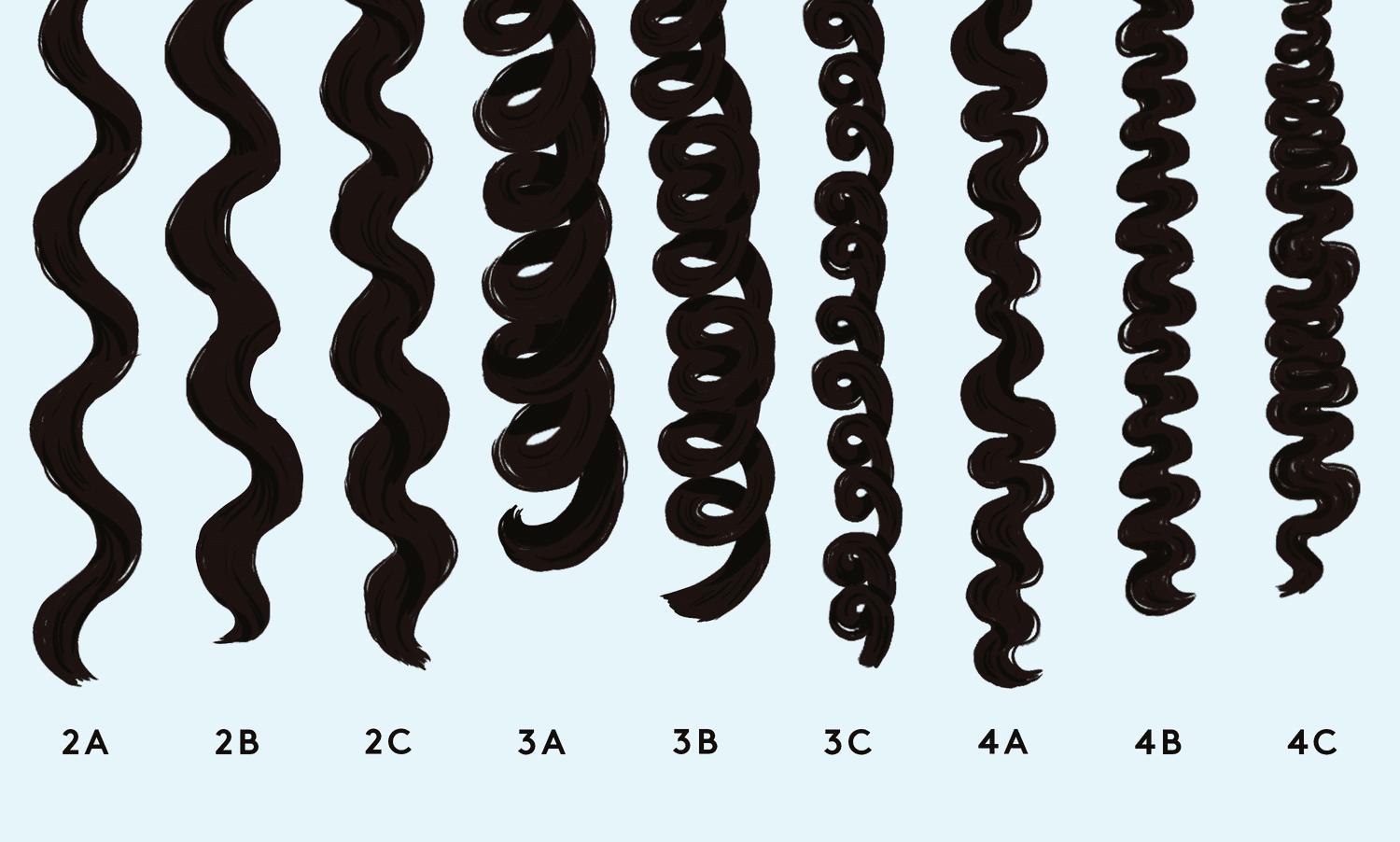
the product away from my roots so that it does not weigh my hair down. If you want extra defined curls, you can put any gel on after you’re done styling, while it’s still wet, to limit the amount of frizz. Once you have your curl cream in your hair, there are two methods you can use to start defining your hair. For more definition and less volume, I would use finger curls. To finger curl your hair, find one clump of hair and follow it all the way to the end. There will be a slight curve one way at the end of the strand. With that bend take both index fingers and pinch it in between your fingers. Following the direction of the bend, start rolling your fingers, almost like a hair roller, all the way up to your roots. Hold it up there for about 5-10 seconds, letting it set. To let it go, slip one index finger out of the curl and follow the pattern of the curl all the way down with your other hand--and you’ve created one perfectly defined curl! With this method, you will have to repeat the finger curls individually for all the strands on your head.
Another option to curl your hair is to use a brush, specifically a denman brush. To start, separate a clump of your hair and bring it away from your head a little. Place the brush under your strand of hair at the root and start to comb it down, keeping tension all the way through. Do not be alarmed if your hair looks almost completely straight right after you comb through. To get the curl to come up, hold the strand at the root and shake it a little. This will allow your natural curl pattern to come through. To maintain your
hair after the first day, I would recommend investing in a silk bonnet or pillowcase to sleep in. Combing your hair after it is dry is not advised as it will make you lose most of your curls, so trying not to comb it will be your best bet.
There are pros and cons to both techniques. Personally, I prefer the finger coiling technique when I style my hair for an event and I want perfect, picturesque curls. However, the downside to the finger coils is that they are much
more time-consuming than the brush technique. Finger coiling my whole head takes me around thirty minutes, while using a brush only takes about 10-15 minutes. The brushing technique also gives a lot more volume because you start styling at the root, which lifts the hair from the root. These are just tips and tricks that have worked for me when finding the perfect curly hair routine, but it will take trial and error to find the perfect recipe for curly hair.


LIFESTYLE THE UNION JUNE 2024 17
Courtesy of RealSimple
Take a strand of hair and compare to this chart to find your hair type.
Agna Soneji | THE UNION
Arnnel Zara
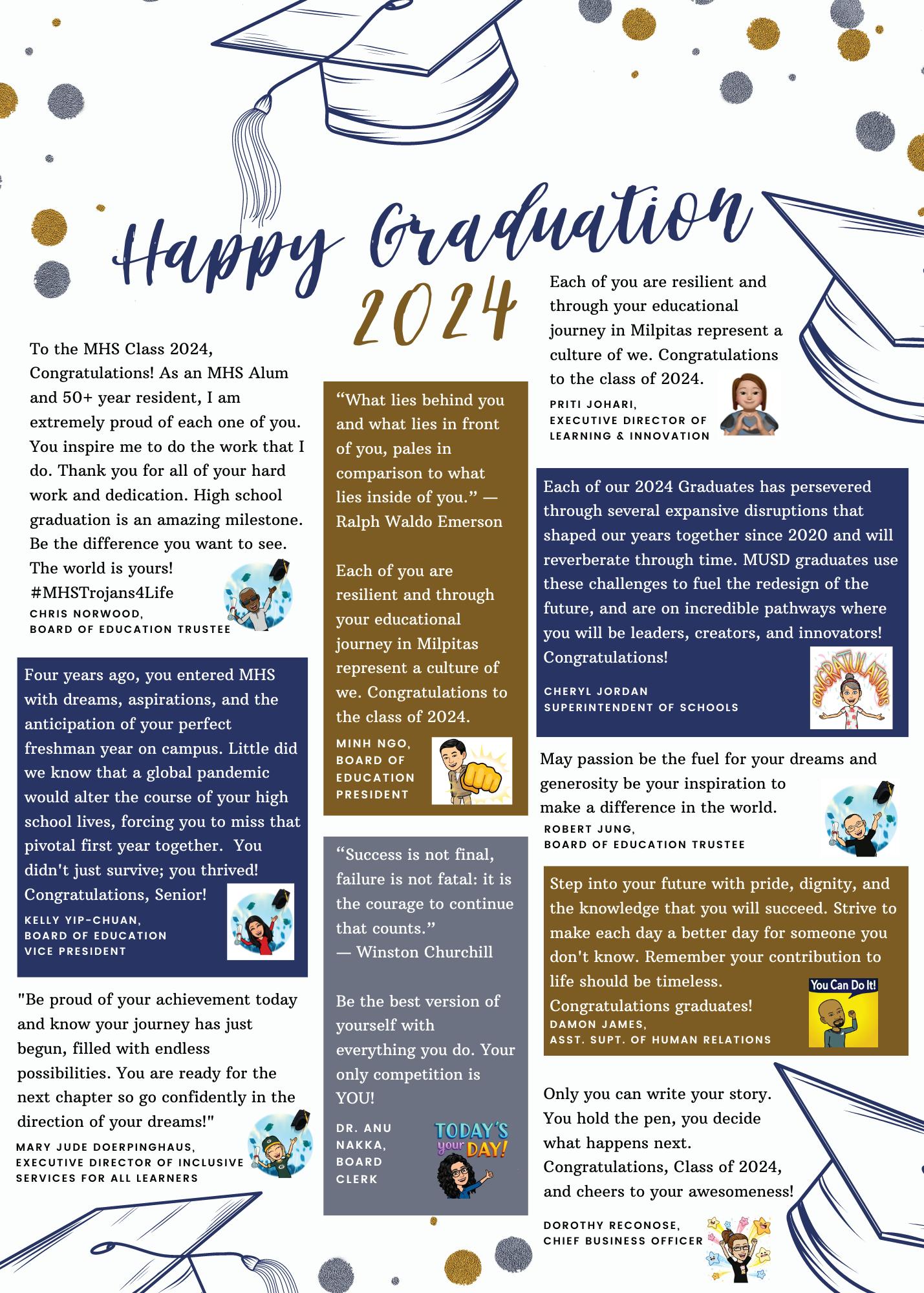
JUNE 2024 ADVERTISEMENT THE UNION 18

Speech and Debate teams make history as quarter-finalists at national tournament
By Yunxi Fang
Senior Isabelle Cho and junior Reba Prabhakhar and juniors Ashton Chen and Atharv Vyas from the Speech & Debate Club finished as quarter-finalists in the Public Silver Forum at the national Tournament of Champions (TOC) at the University of Kentucky on April 22, 2024, according to the Tabroom website.
The TOC is one of the three largest annual high school national speech & debate championships, alongside the Speech and Debate Association (NSDA) National Championship and the National Catholic Forensic League (NCFL) Grand National Tournament, speech & debate coach Charles Schletzbaum said.
“Of the top eight teams in (the Public Silver Forum), two of them were from Milpitas, which is the best our school has done in recent history,” Schletzbaum said.
To help Cho, Prabhakar, Chen, and Vyas prepare for the debates, speech & debate Public Forum Debate coach Victor Umana always discusses the topic with them together and assigns them a research assignment, Umana said “A lot of the times we will answer some questions that I think are relevant to the topic,” Umana said. “We’ll use that as a discussion point to discuss background information about the topic (...) Then, they’re tasked with outlining a set of arguments in order for us to discuss and decide whether or not that’s the route we want to go in regards to writing our first draft of arguments that we can present at a competition.”
To attend the Tournament of Champions, Cho and Probahakhar had to qualify by going to other tournaments first, Cho said.
“You have to make it to the eliminations of (a tournament) in order to get a TOC bid,” Cho said. “We had to go to as many of the big qualifier tournaments as possible in order to get enough bids.”
A topic that stood out to her and Prabhakhar was whether the UN Security Council should have permanent memberships, Cho said. TOC was a good place to have academic discourse on important topics like Israel and Palestine and the Russo-Ukrainian war, Cho added.
“My personal favorite topics are the geopolitical topics,” Cho said. “Debate features a lot of history, but at the same time, all your evidence has to be from current events, from (policies) being passed right now.”
Going into the tournament, Cho and Probahkhar’s expectations were not very high since they had to fly from Barcelona and compete the next day, Cho said. There was a big time differ-
Wohlman discusses first year of Fight-Free Campus Challenge, hopes for more progress
By Akshaj Kashyap
Principal and Chief Innovator of Milpitas High School and New Campus Programs Greg Wohlman introduced the Fight-Free Campus Challenge (FFCC) on Oct. 13, 2023, to help reduce the number of fights on campus, he said. He originally had rewards planned for all grade levels that could remain fight-free throughout the year, but a consensus on how to reward the students was never achieved as there was limited student feedback, he added.
it is.”
Wohlman believes that if fights aren’t accepted in places like grocery stores and restaurants, there shouldn’t be any fights on campus either, he said. Starting the Fight-Free Campus Challenge has been a way for him to combat the narrative that fights belong on campus, he said. Additionally, roughly 18% of students and adults believe MHS can be fightfree, which Wohlman surveyed himself at the start of the 202324 school year, he added.
ered fighting and chose not to, he said. Those prevented fights might have also stopped multiple other conflicts and issues that could have stemmed from the original fights, Wohlman added. The success of FFCC is relative to the beginning of the school year when fights were common and an issue noticed especially by security guards.
ence, and they didn’t do much research while traveling in Europe, she added.
The tournament “was really exciting,” Cho said. “This is the highest place Milpitas has placed before. (...) It’s also bittersweet because that was my last tournament.”
Going into the pre-eliminations, Chen expected his team to get three wins and four losses (3-4) because they started their preparation very late, he said.
“What ended up happening was we ended up going 6-1,” Chen said. “We (became) the seventh seed in the tournament overall, and we ended up making it to quarters.”
Chen and Vyas’s chemistry during TOC was unmatched, although they could’ve worked on their preparation better, Vyas said.
“Overall, in terms of my first full year debating, I feel I have accomplished a lot; I’m proud of it,” Vyas said.
Unlike the stereotypes, speech & debate doesn’t have that high of an entry barrier, Chen said.
“I think (Vyas) and I really showed that if you put your mind to it, regardless of where you come from, you’ll be able to succeed in the debate space,” Chen said.
Freshman Aadya Rai qualified for the NSDA National Championship which will be held in Des Moines, Iowa, from June 16-21, 2024, by participating in the Lincoln Douglas (LD) debate at the NSDA Last Chance Qualifier, speech & debate and LD Debate coach Aadaf Zahoor said.
“The (NSDA) had their national qualifiers already, (...)” Zahoor said. “This Last Chance Qualifier is unique because it was open to the entire country. It wasn’t just people in the (NSDA) that she was debating against.”
Rai’s biggest struggle during the NSDA Last Chance Qualifiers is that she was used to doing circuit debate in middle school, Rai said. Circuit debate involves fast speaking and using all kinds LD theory that only debate-coaches-judges would know, she added.
“When I went to high school, there were more parent-judge debates,” Rai said. “It’s more like what do you need to say to convince a parent and that’s what I found difficult.”
Previously, she did not qualify for the NSDA National Championship when she participated in the district qualifier tournament, Rai said.
“I got crushed; I didn’t even go to the elimination (rounds),” Rai said. “(NSDA) Last Chance is a national tournament where the top 16 out of 236 qualify and go to nationals, I didn’t think I would qualify but I somehow did, my record was 8-1.”
Since the start of the initiative, there were 17 fights in the first semester and another 13 fights and one assault in the second semester as of May 21, according to statistics provided by administration. Of these fights and assaults, there were 24 freshmen, 12 sophomores, 10 juniors, and two seniors involved from the start of the FFCC to May 21, according to administration.
“As soon as you engage (in a fight), you lose your autonomy; you lose your choice of how it is going to end,” Wohlman said. “That is what makes me nervous and worried about kids’ futures— when either you’re going to be the recipient of violence or you’re a person engaging in violence (who) needs to pay the debt that you create by harming another person, that’s really hard for people to recover from on both sides.”
The start of the 2023-24 school year saw 11 fights across all grade levels by mid-October, motivating Wohlman to find a solution to combat the increased fighting, he said. There had only been 20 fights in the entirety of the 2022-23 school year, according to Wohlman.
“As a society, we have become accustomed to, ‘Well, large school campuses, you’re going to have fights. That’s just the way it is,’” Wohlman said. “But we have to stop accepting that that’s the way
“My ultimate hope is, years from now, a student and I will be in a conversation and I’ll say, ‘Yeah, I bet there’s gonna be a fight tomorrow,’ and a kid will look at me, laugh, and say ‘Yeah, we would never have a fight here. This is a school,’ and they would walk away,” Wohlman said. “Then I would know (MHS has become fight-free); we did it.”
Although converting the narrative and mentality around fighting is difficult, Wohlman plans to meet with freshmen every year and give them a similar talk to the one he gave at the beginning of this school year as an introduction to the challenge to discourage fighting, he said. He has not decided on his plan for returning students, and he relies on student feedback to understand and decide what is necessary, he added.
Some students have said, “‘We know it’s a fight-free campus, we understand, but, Mr. Wohlman, I got really mad,’” Wohlman said. “But at least, even in that conversation where somebody chose to fight, they were still processing whether to fight or not, rather than just go and do it. That is still a win in some ways and that student is owning their emotions and their anger and they’re trying to work through it.”
Wohlman emphasizes that much of the success of the FightFree campus initiative may be hidden, as some students consid-
“I thought (the FFCC) was a really good idea, a really good implement at the beginning of the year because it was really tough for us (security guards) in the beginning of the year because there was a lot of fights going down,” safety supervisor Pulefano “Niko” Afuola said. “Since then, there (were) a couple more fights, but it’s been a lot calmer since the beginning of the year where it was kind of rocky.”
Afuola was one of the many security guards on campus who noticed the increased fighting on campus this school year and approved of the Fight-Free Campus initiative, he said. He wishes the school could have stayed consistent with the message but understands the logistical difficulties in setting up regular meetings, Afuola added.
“I think there should just be a better reward system so people can actually feel like they’d accomplish something for not fighting,” junior Arnav Pahuja said.
Some students like Pahuja believe FFCC overall was a positive endeavor but the execution could have been improved, Pahuja said. “I really believe in the kids of Milpitas, and I really think if we want a fight-free campus, the kids can make it happen and they can stay safe,” Wohlman said. “We can improve as communicators so even when students are super angry at each other, they can have the courage to talk it through, which takes a lot more time and energy than it does to go have a fight.”
New LCAP plan works towards more effectively addressing student needs, involving community
By Maryam Mohamed
The new three-year Local Control and Accountability Plan (LCAP) plan for 2024-27 is meant to improve on the previous plan and support student populations that are struggling, Superintendent Cheryl Jordan said. The LCAP is mandated statewide and consists of schools using their local control of state funding to achieve eight priorities outlined by the state, she added.
MUSD organized the state’s eight priorities—specifically concerning students’ conditions of learning, student outcomes, and engagement—into three overarching goals and 40 specific actions, according to Executive Director of Learning and Innovation Priti Johari, who also leads the LCAP Advisory Committee.
“In a nutshell, I see the LCAP as a way to capture the voices of all who make up our MUSD community, with very intentional strategies to meet the needs of every single learner,” Jordan said.
To create the LCAP for the next three years, an LCAP committee with over 40 participants was organized and established, Jordan said. This committee includes parents, community members, board members, teachers, and students, she added.
“This is the biggest advisory committee that we’ve had to date,” Jordan said.
To gather data, the LCAP Thought Exchange was sent to
every community member of the district, Johari said. This year, the LCAP advisory committee focused on creative methods of outreach, she added. The committee ultimately received 1407 responses to their survey, according to the presentation at the LCAP study session during the MUSD board meeting on May 14.
“We have a large, diverse, committed (LCAP) committee that can then reach out to specific groups,” Johari said.
In addition to the Thought Exchange, 25 LCAP Metrics, four district committees, and three additional surveys are data sources that influence the LCAP, MHS English teacher Brett Webber said in the study session.
“One thing that really struck me was how much input seemed to come together (...) and coalesce in this report,” Webber said at the study session.
The LCAP is designed every three years and updated annually, according to Johari.
“Right now, it’s really about acting on the feedback that we got and turning those into actions,” Johari said.
The 2024-27 LCAP’s first goal concerns bridging the gap in curriculum for students of low socioeconomic status, students with home insecurities, and English learners, who are designated as either English learners (ELs) or Long-Term English learners (LTELs); job-embedded professional development for teachers
is a key factor in achieving this goal, according to the presentation at the study session.
“The first goal is focused on instruction: making sure that all of our students have highly qualified teachers, standards-based instruction, and that we have culturally responsive and inclusive environments for our students,” Johari said in the study session.
The LCAP’s second goal concerns students’ social-emotional health, Johari said during the study session. Mental health was the number one concern of all MUSD community members in this year’s Thought Exchange, she added.
“When we invest in mental health support, we will see the suspensions come down, we will see our SPED (special education) numbers decrease, because it’s really hard to tease out the difference between a learning disability and trauma,” Nicole Steward said in the study session.
The LCAP’s third goal seeks to increase collaboration between parents and school educators, Johari said during the study session.
“Parents in particular are key partners in childrens’ education,” Johari said. “(We will be) working with them both on decision making but also on skill building for them.”
The new LCAP involves considering community partnerships
NEWS JUNE 2024 THE UNION 19
Courtesty Of Charles Schletzbaum
From left to right: Cho, Prabhakhar, Schletzbaum, Chen, and Vyas stand in front of the historic Campbell House in Lexington, Kentucky.
SEE PAGE 16
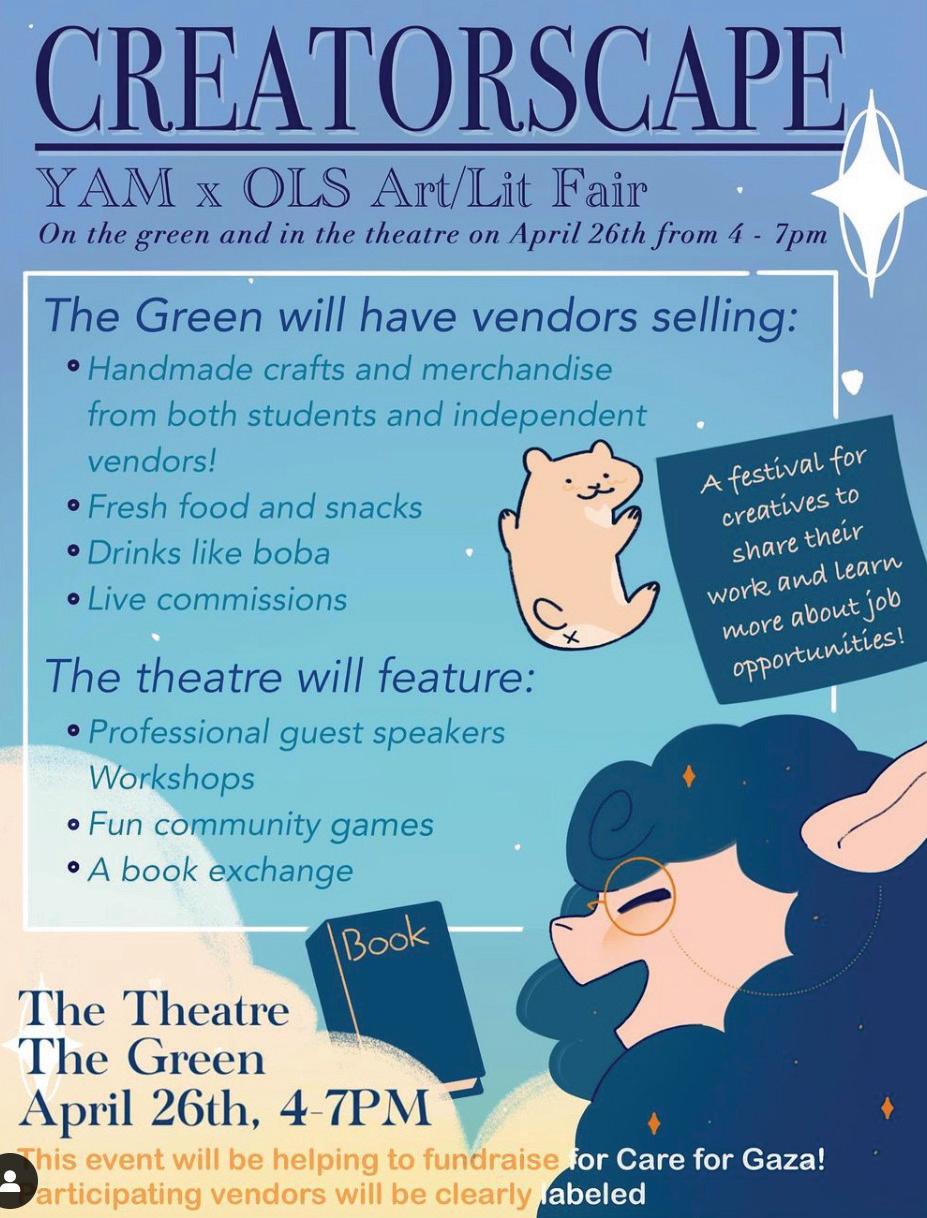
FROM PAGE 1
Campus Programs Greg Wohlman told YAM advisor Emily Moore through email on April 23 that mentions of Gaza and Palestine would not be allowed in advertisements or at the event and should be generalized as humanitarian aid or relief, YAM officer Leslie Dong said.
Chua and Nguyen met with Wohlman the next school day to discuss the reasoning behind removing mentions of Gaza and the logistics surrounding that decision, Chua said. Later that day on April 24, Moore informed the OLS and YAM officers that CreatorScape could not be held as per Wohlman’s decision, Chua said. All of the officers were shocked by the escalation of the school’s stance regarding CreatorScape, Chua added.
YAM “proposed that they wanted to do a Care For Gaza fundraiser and then that was included in the event because some of their vendors wanted to donate their proceeds to Care For Gaza,” Chua said.
Innovation Campus planning progresses in preparation for upcoming school year
FROM PAGE 1
pus itself, along with creating partnerships and pathways and advanced manufacturing engineering,” Wohlman said.
Industry partnerships and certification-earning programs, such as nursing, are also currently in discussion, Jordan said.
“We’re trying to ensure that learners can really maximize their time in school,” Jordan said. “They will have even more opportunities than they have now to advance to whatever career they are interested in or obtaining degrees through higher education.”
Physical Education (PE) at the Innovation Campus will be taught by PE teacher James Sampson, who will be teaching at both the main MHS campus and extension, Wohlman said.
“They will be using the Milpitas Sports Center for their fields and the gymnasium when we need it during the day,” Wohlman said.
Extracurricular sports, howev-
er, will still take place at MHS and will be open to Innovation Campus students, Wohlman said.
“Transportation will be available for those students that are in after-school clubs or after-school sports. We’ll be giving them a ride over here to the main campus,” Wohlman said. “So if you had a sport like basketball or something going on after school, or if you had a club organization that meets every day after school, you’ll have a ride to join those activities.”
Aside from the high school extension part of the Innovation Campus, an early childhood education research center will be constructed as a part of Phase III of the project, Jordan said.
“We’re eventually going to partner with another community college or possibly San Jose State to provide career pathways in education,” Jordan said. “The early childhood education research center will operate as a living lab with real kids, which can help
people earn certification to work in such career areas.”
The district is still in the process of partnering with outside organizations and companies such as Flex, an electronics manufacturer, and CalHOPE, a mental wellness resource center, to provide students with opportunities outside of campus, Jordan said.
“In all aspects of the MUSD Innovation Campus, we’re trying to offer education opportunities to both child learners and adult learners,” Jordan said. “It’s all coming to fruition, and it’s very exciting.”
Ultimately, the goal of the MHS extension at the Innovation Campus is to provide an alternative for high school students in MUSD, Wohlman said.
“Some students just want to go to a smaller high school,” Wohlman said. “The people in Milpitas should be happy with the educational choice to go to four different campuses.”
District finalizes upcoming LCAP to improve school environment, community involvement
FROM PAGE 15
beyond parents, Johari said.
“We are looking to have workbased learning or internships (with the Innovation Campus),” Johari said. “So that will be one of the (...) specific actions that we start working on next year: reaching out to our local community, local businesses, and setting up internships for students.”
The funding for the LCAP is planned for in an extensive spreadsheet that lists the specific goals within the three main goals, Assistant Superintendent of Business Services Wendy Zhang said. In determining how to allocate funds, the LCAP is also impacted by the California state deficit, she added.
“Our budget will reflect on that (deficit) while we work on our 2425 budget development,” Zhang said. The LCAP is meant to better document MUSD’s priorities as a school district and community, Zhang said.
“It really is a plan that’s focused on the needs of all and doesn’t gloss over the needs of the few,” Jordan said.

The officers of both clubs believe that the security concern cited by administration was merely a hypothetical threat for anyone attending CreatorScape, Chua said. The decision to cancel CreatorScape was too extreme, she said.
Past club fundraisers for Gaza “had zero issues in terms of security, and when we asked him (Wohlman) to name a specific instance, in our meeting with the admin, they (school administration) couldn’t name anything,” Chua said. “The best they could name was something that happened in 2020, in which people were upset about the school support against Trump.”
The combined CreatorScape event planning effort started in March when Chua and Nguyen both realized they wanted to host a similar event, Chua said. The original event included 25 vendors, multiple guest speakers, and potentially more than a hundred visitors, she added.
“We were really saddened by (the decision to cancel CreatorScape), but we also know
there was no winning with this, so we asked if we could remove Gaza from (the event flyer) and still have the event, given that vendors worked really hard to prepare everything for the event and they (school administration) said no,” Chua said.
All the officers worked tirelessly to set up the event, from reaching out and coordinating with guest speakers and vendors to worrying about logistics, Chua said. The officers were frustrated by the lack of communication from the administration and how all of their decisions were announced via email and through their advisor rather than in an in-person meeting, Chua added.
“I understand their perspective, but again, I think it was an extremely foolish decision to not only cancel (CreatorScape) but to imply that there is some kind of physical threat that could not be amended by either censor (of advertisements and posters) or security,” Nguyen said.
Wohlman was unavailable for an interview for this story despite repeated requests.
New elective classes added
FROM PAGE 1
that way he will be effective at it, said social studies teacher Clarence Wrencher, who will teach next year’s Ethnic Studies: History of Hip-Hop class.
“I’ve been listening to hip-hop and rap music all my life, and I’ve seen the whole history of it,” Wrencher said. “I’ve seen where it came from and I grew up with it, so I think I am in a position to give some authenticity to its history based on my personal experience.”
Hip-hop is important to learn about because it is a product of American culture and reflects American society, Wrencher said.
“It is the people’s untold history,” Wrencher said. “It gave voice to the people who had been disenfranchised, and I want to show students the people’s voice.”
English teacher Brian McGarry will be teaching next year’s Film History class and he jumped at the opportunity to teach it, McGarry said.
“It is an area that is very dear to me,” McGarry said. “Just as far as studying goes and looking at old films, it’s always been an area that’s interested me since I was young.”
Students nowadays face a lot
FROM PAGE 1
ties dictate where that funding goes,” Ngo said. “So we have more direct control.”
Property taxes in Milpitas alone aren’t high enough to support funding for students’ education, Ngo said.
The cost for education is “roughly about $16,000 (per student per year),” Ngo said. “Right now, we’re only funded at about $13,000 per student, so there’s a $2,000 gap range, if we’re talking about the average education.”
Funding from the state is supplemental to the school funding, Ngo said. However, it does not provide enough support, he added.
“If you look at the way taxes are, you have property tax, part of which goes to funding school districts,” Ngo said. “And you have income tax, which doesn’t always go to the school districts. It goes to the state, and they decide as far as how to allocate that additional funding.”
more media, and not understanding media is comparable to not knowing how to read or speak, McGarry said. However, media literacy is still rarely taught in schools, he added.
“I think (media) is the most powerful form of communication we have and we don’t show people enough of it,” McGarry said. “That’s where I’m hoping this (education curriculum) evolves and that eventually every school in America will have a media studies course.”
Interesting classes make high school engaging, Wrencher said.
“Classes like these make people excited about school and learning because they know they can get into something they think is really fun, interesting, and relatable,” Wrencher said.
For the 2025-26 school year, a few classes that have already been proposed are Science Olympiad and a class about career planning, Mach said.
“I think every so many years we have to look at our classes just to change with the time and see what’s needed and what’s not needed,” Mach said. “Adding classes is a really good process that we’ve had open to everybody. You just let us know and, if it’s the time for it, we’ll talk.”
Schools in MUSD must also receive sufficient funding to keep up with new technologies like artificial intelligence (AI), Board Trustee Chris Norwood said. Technology is getting more advanced and teachers are learning how to integrate AI into the education system, he added.
“The world is just changing so fast,” Norwood said. “I want (the students) to have a glimpse of it while they’re at school. There’s nothing worse than a school that’s not relevant, or a classroom that is not teaching you relevant things.”
With the introduction of AI, it is essential that MUSD graduates are up-to-date on knowledge about topics like computer science, or else they will fall behind others in Silicon Valley and the rest of the world, Jordan said.
“I don’t want our learners to be behind others when it comes to having the tools and experiences that they need so that they can be the leaders and creators of the workplace,” Jordan said.
NEWS THE UNION JUNE 2024 20
to security, safety
charity for Gaza
CreatorScape cancelled by administration due
concerns over
MUSD board hopes to add parcel tax
The California Department of Education outlines eight state priorities for school districts to consider while designing LCAP every three years.
Courtesy of Imperial County of Education
The original CreatorScape flyer, pictured above, is on YAM and OLS social medias and mentions Care For Gaza at the bottom of the page.
Savan Bollu | THE UNION


 By Tiffany Ng
By Tiffany Ng
















































































 By Sanvi Parvatikar
By Sanvi Parvatikar


 By Maryam Mohamed
By Maryam Mohamed




 By Dhara Mehta
By Dhara Mehta













